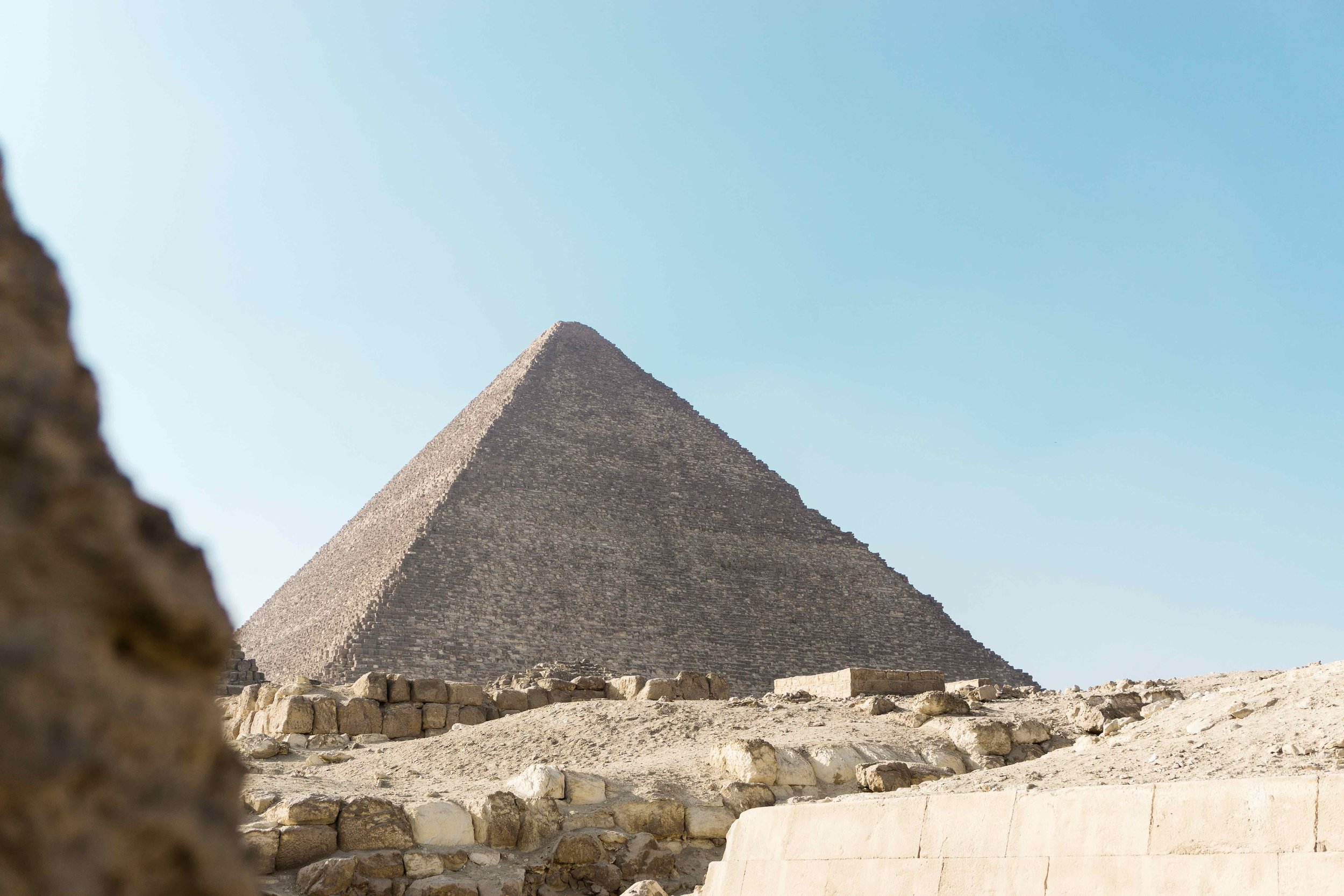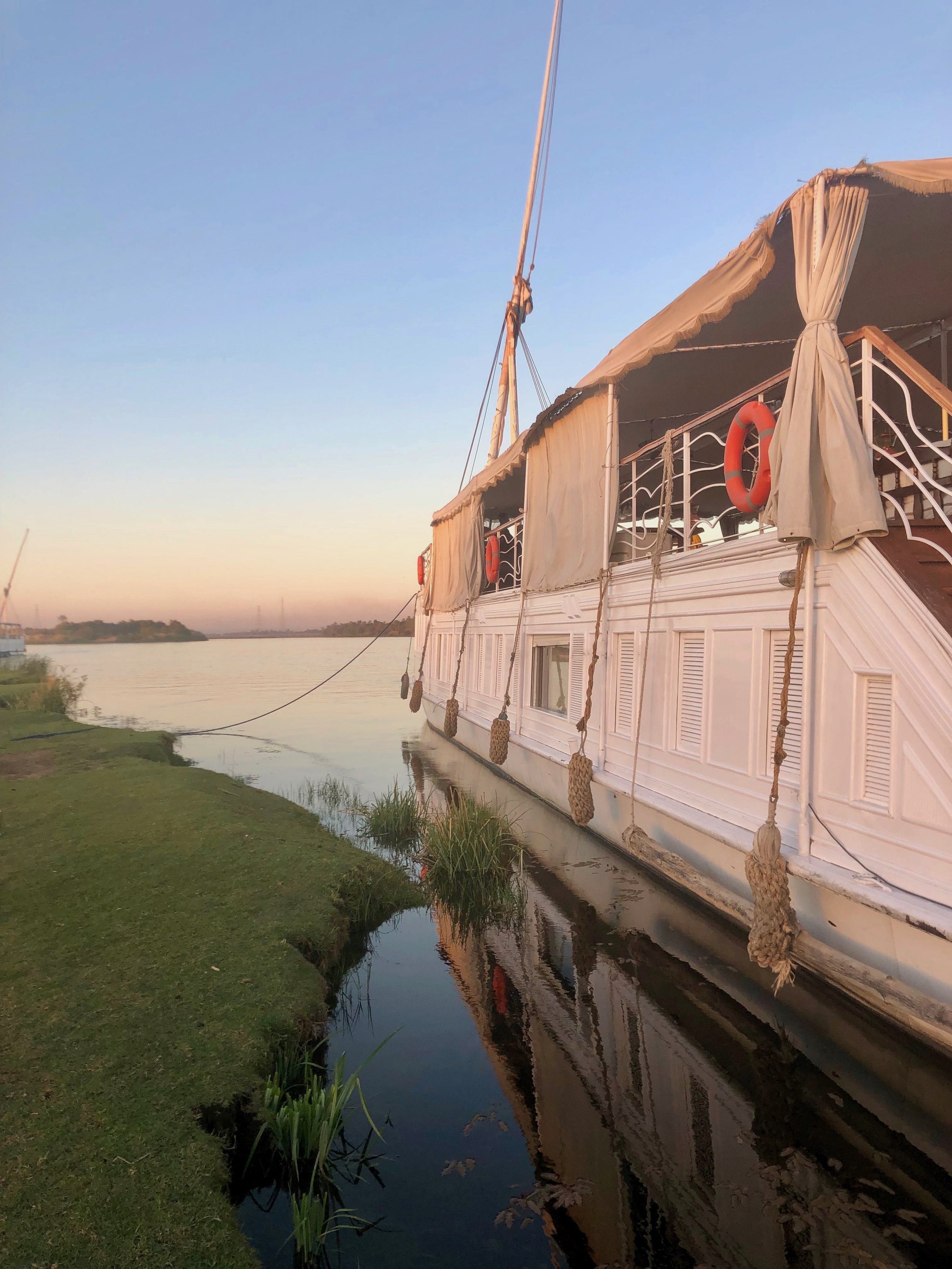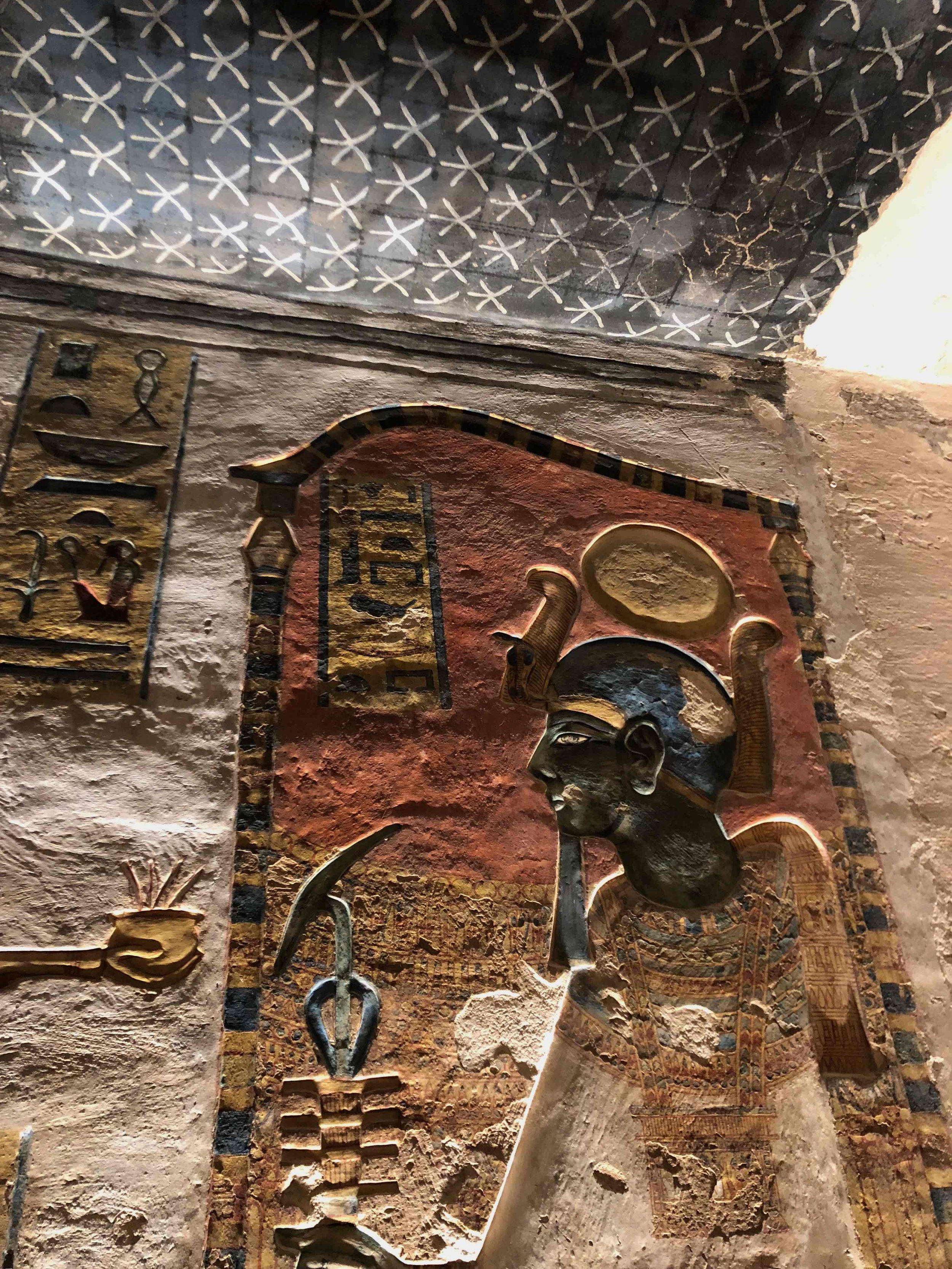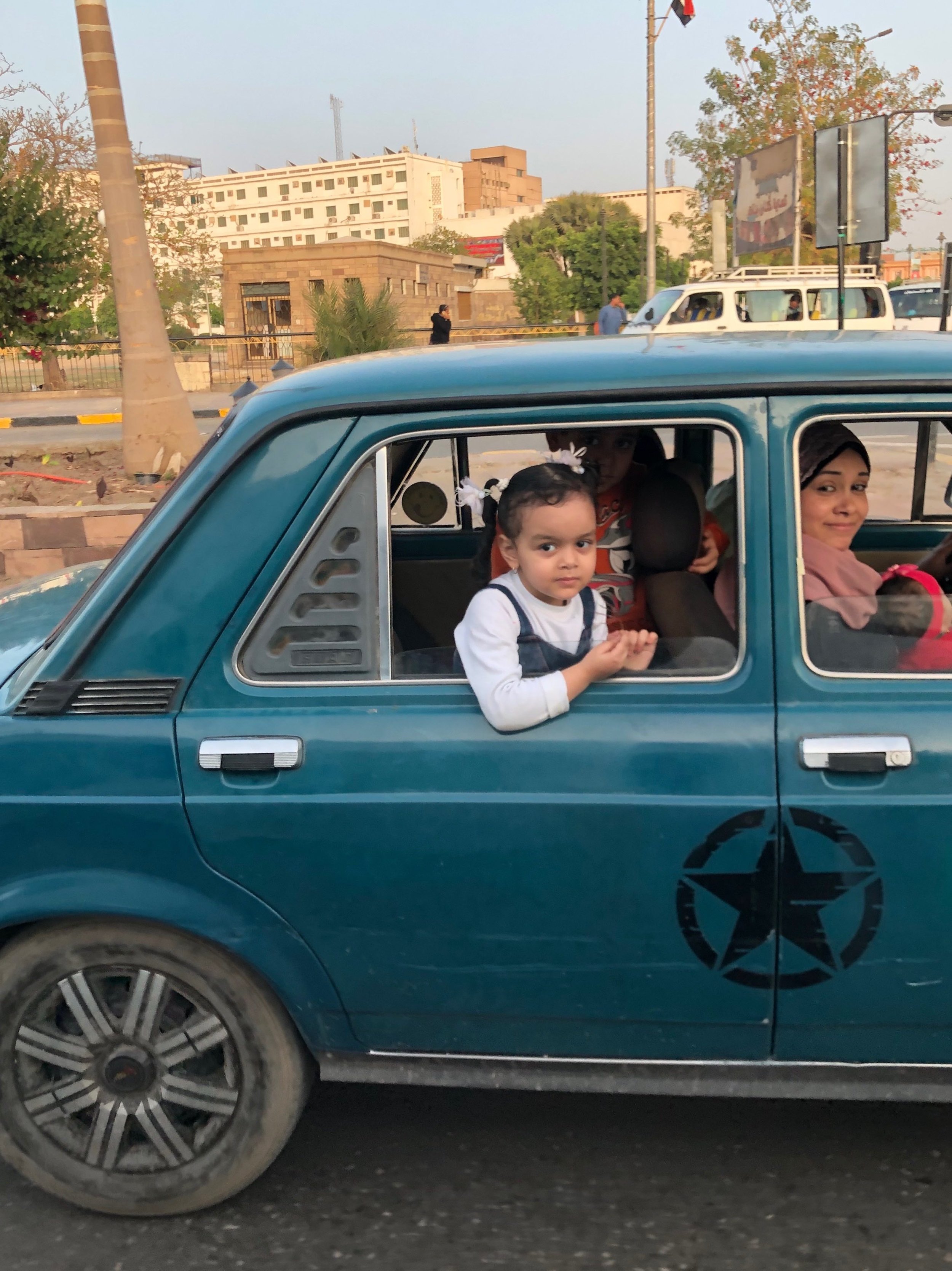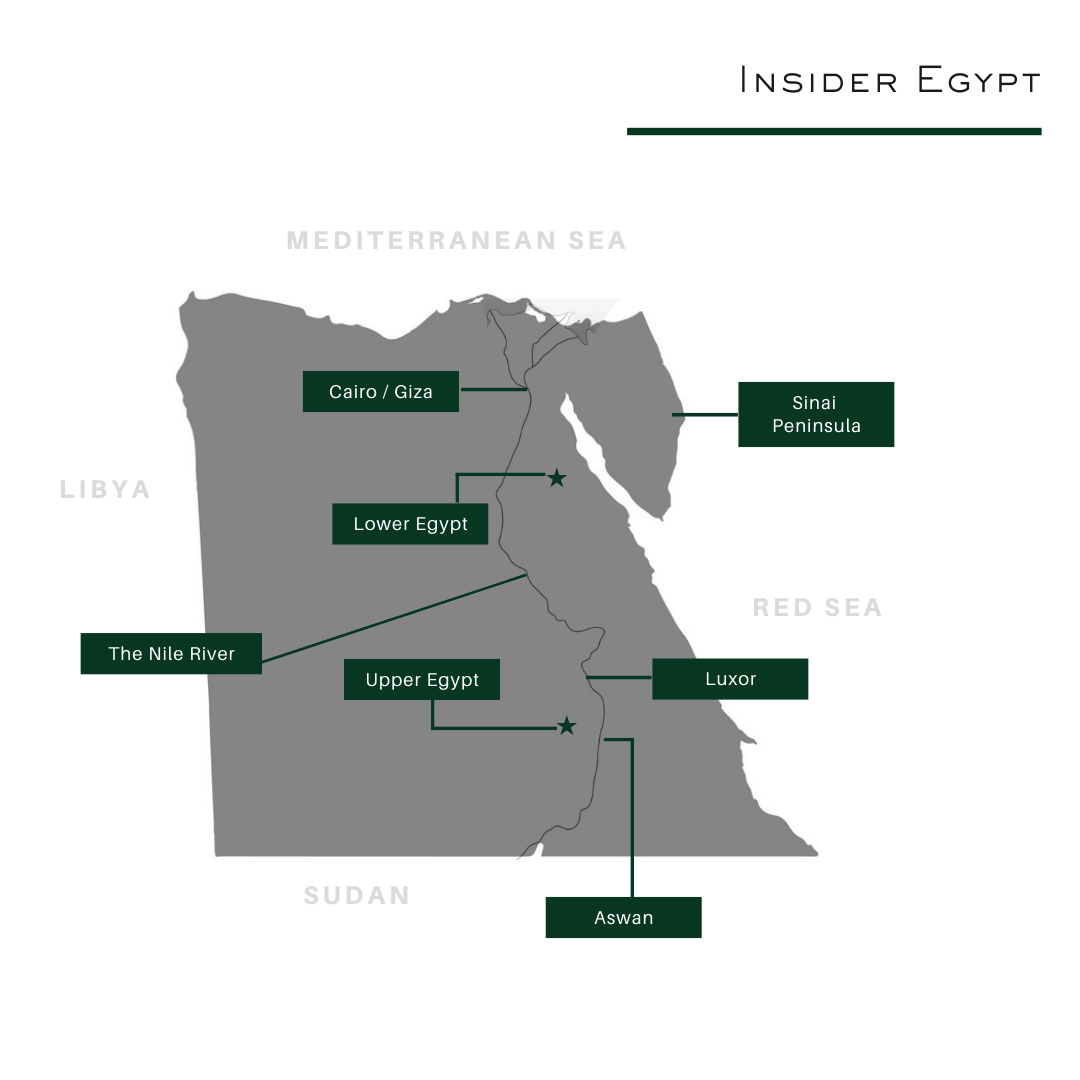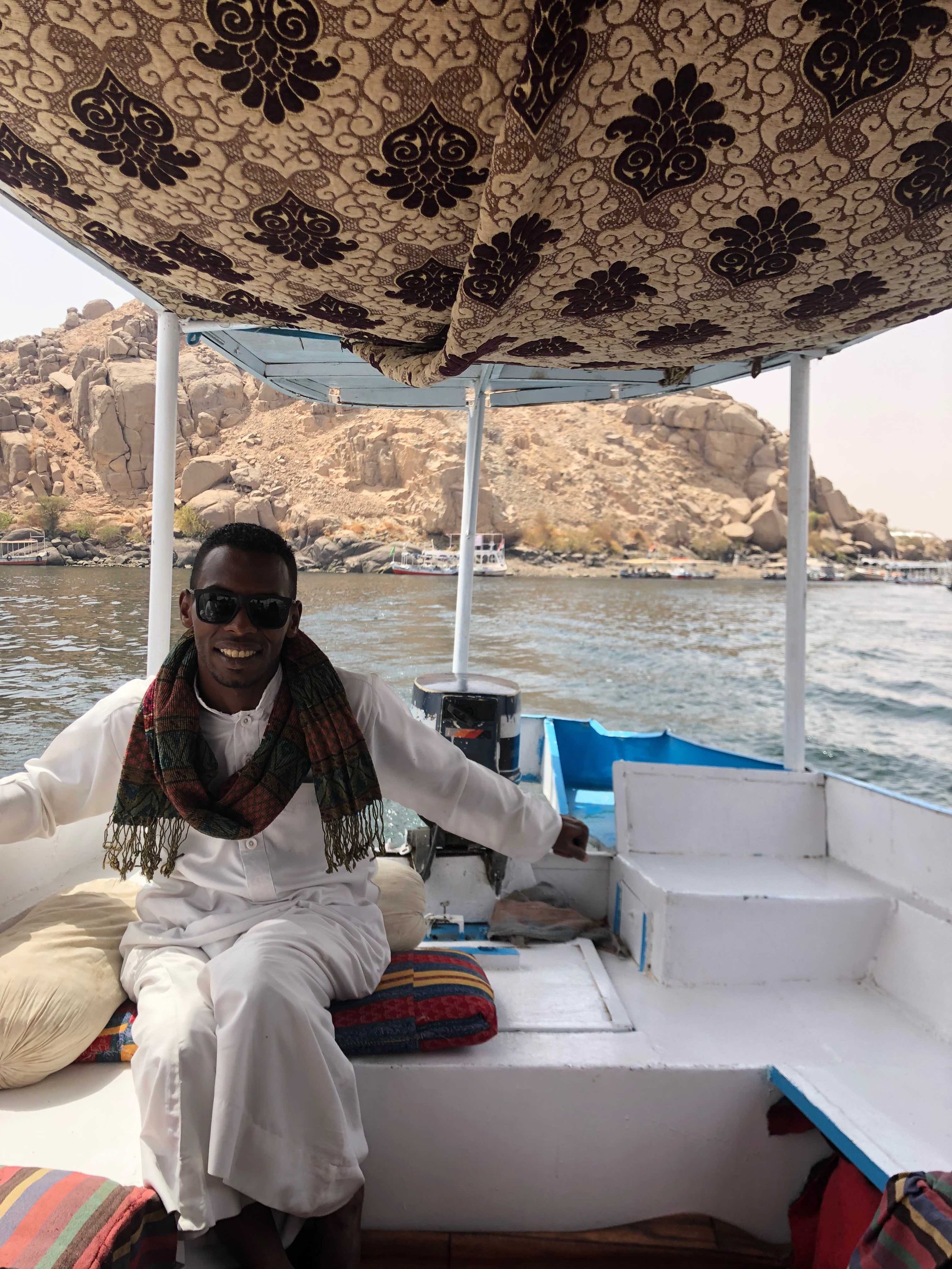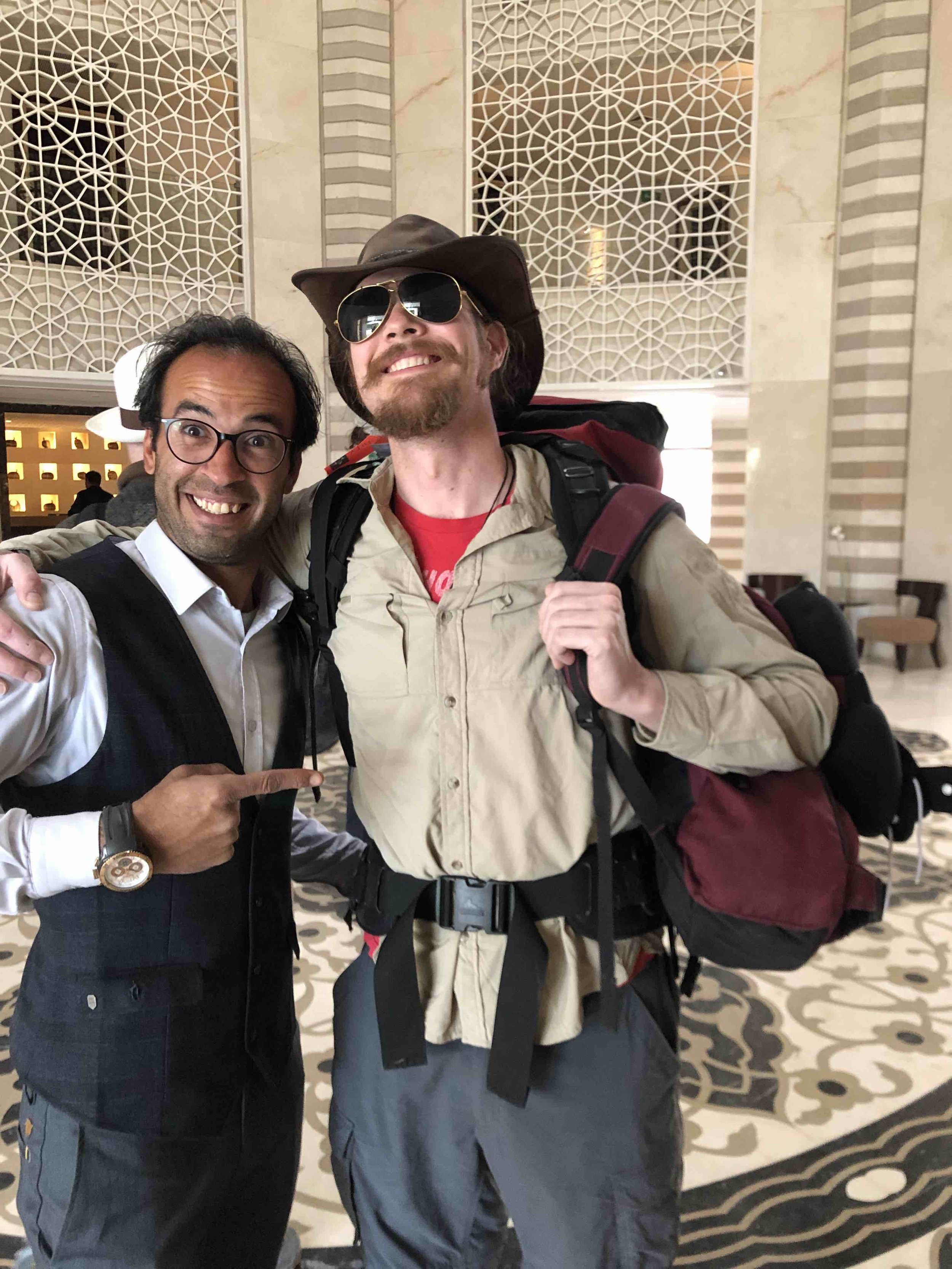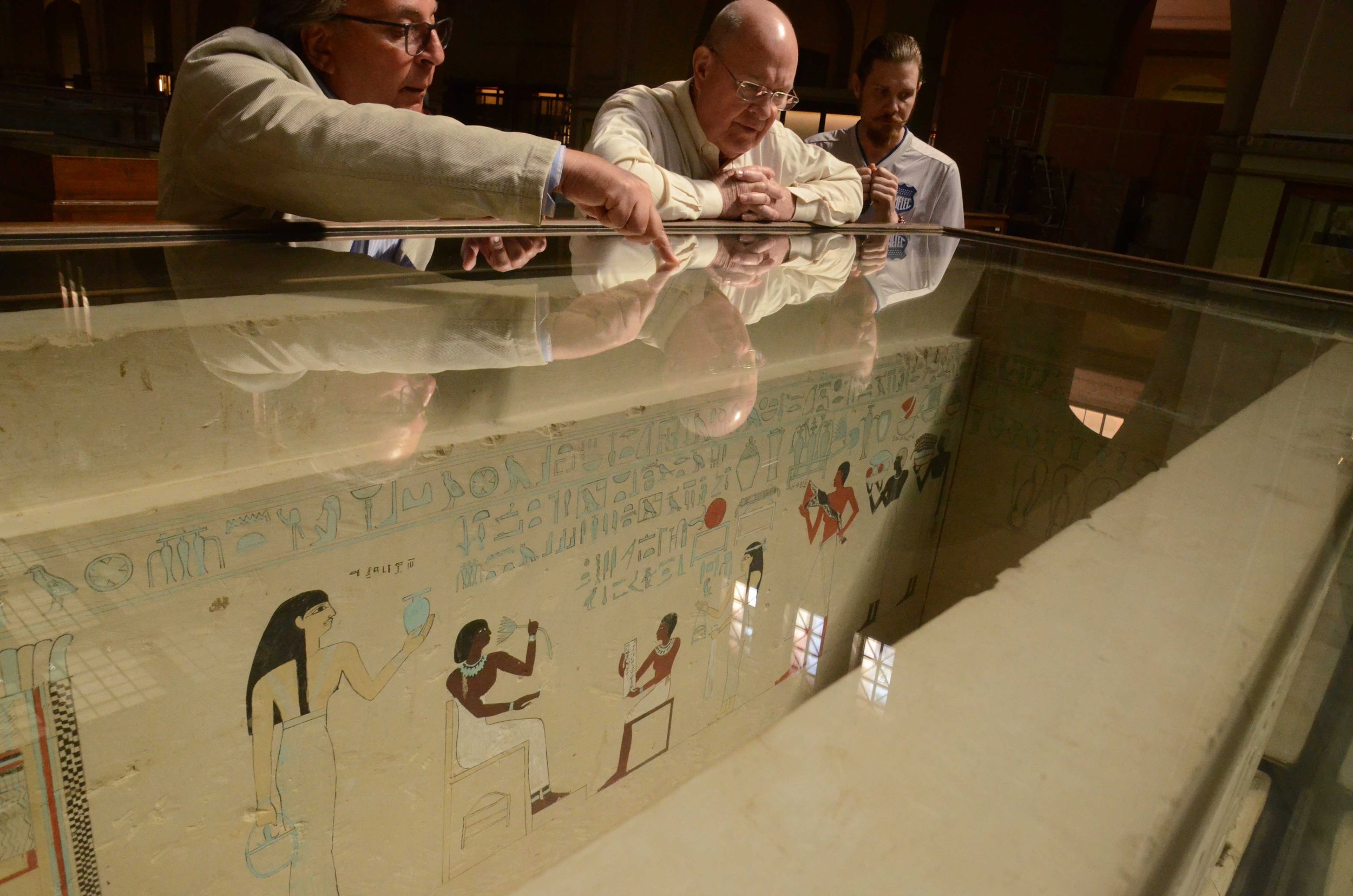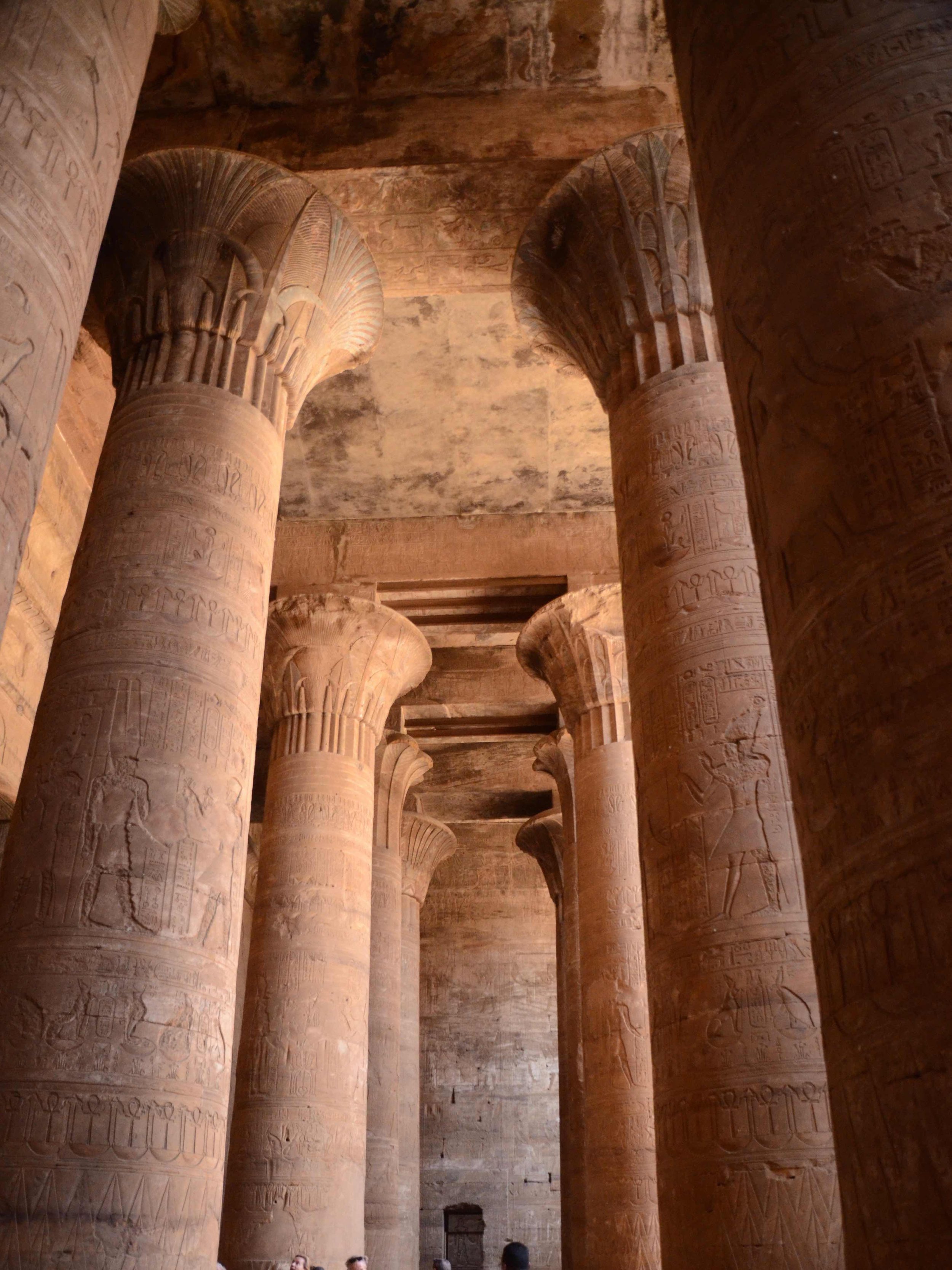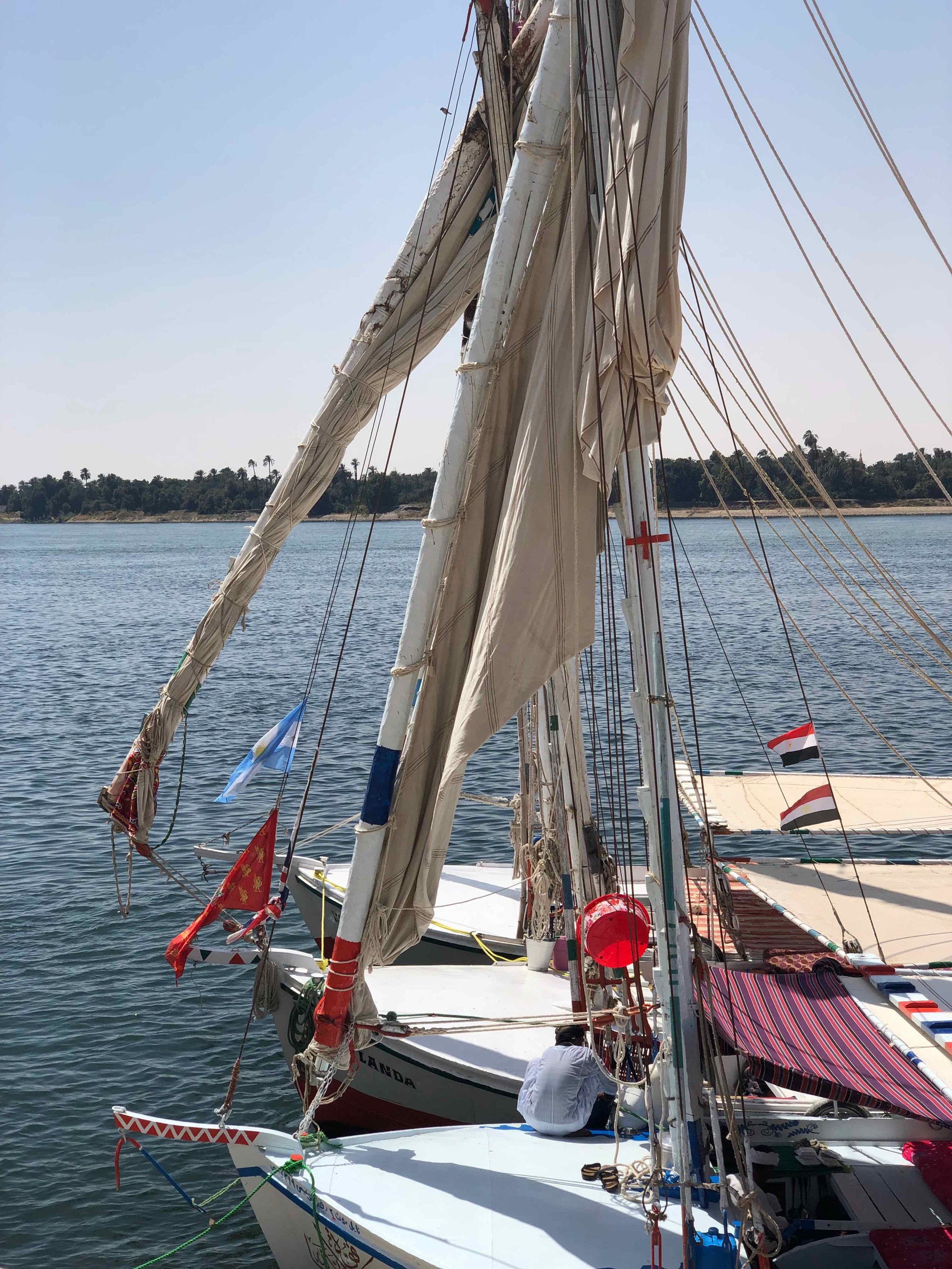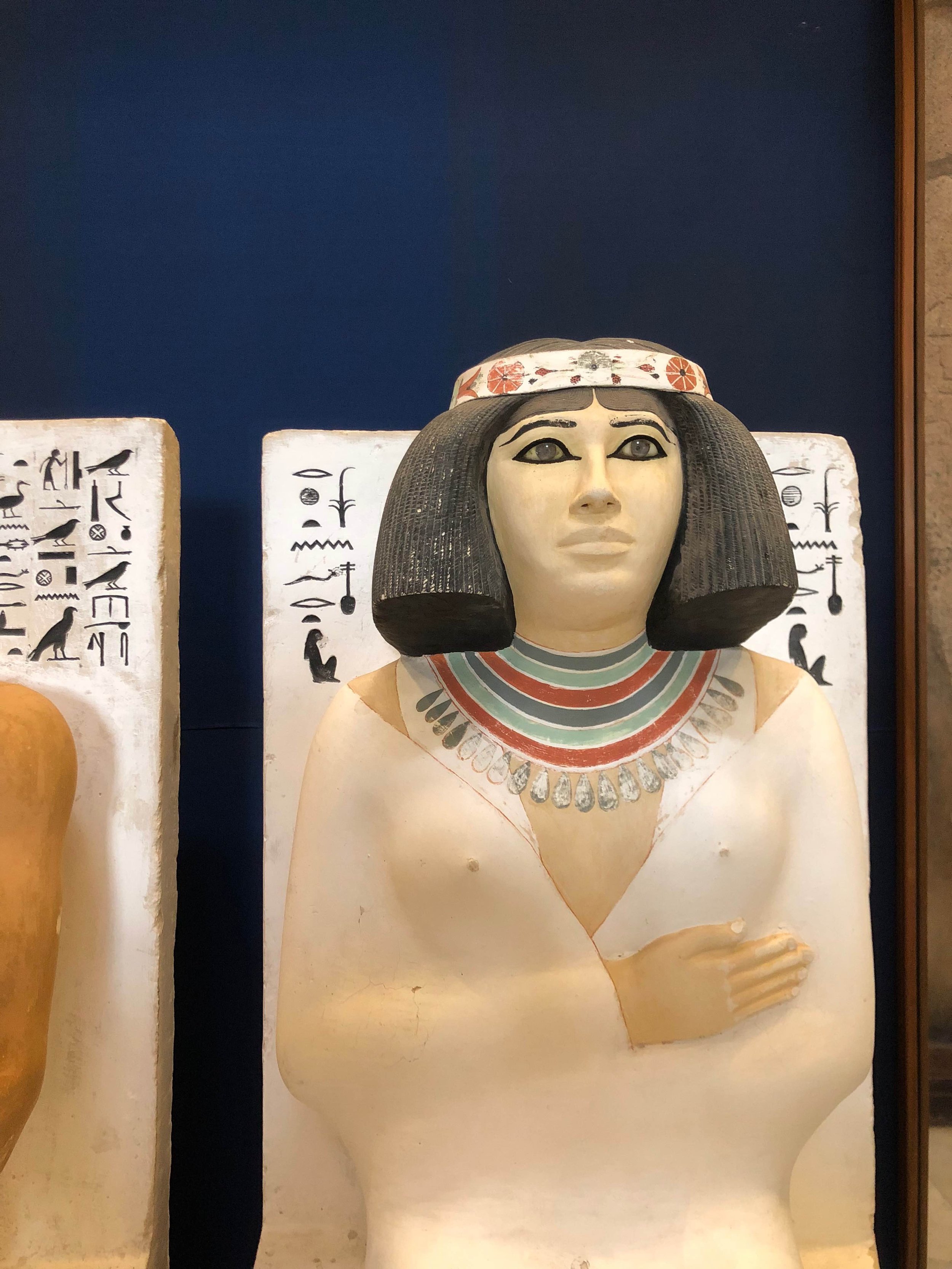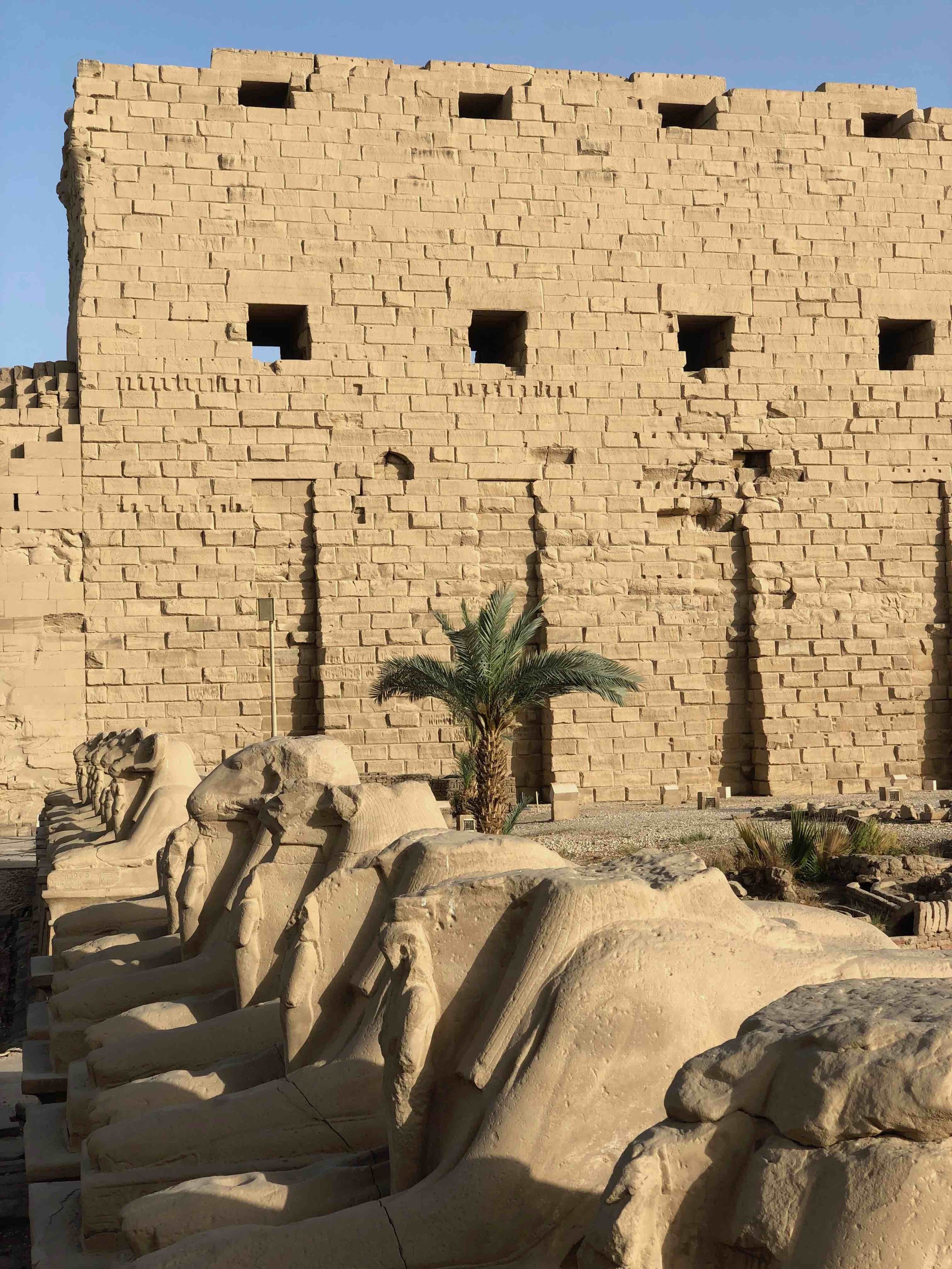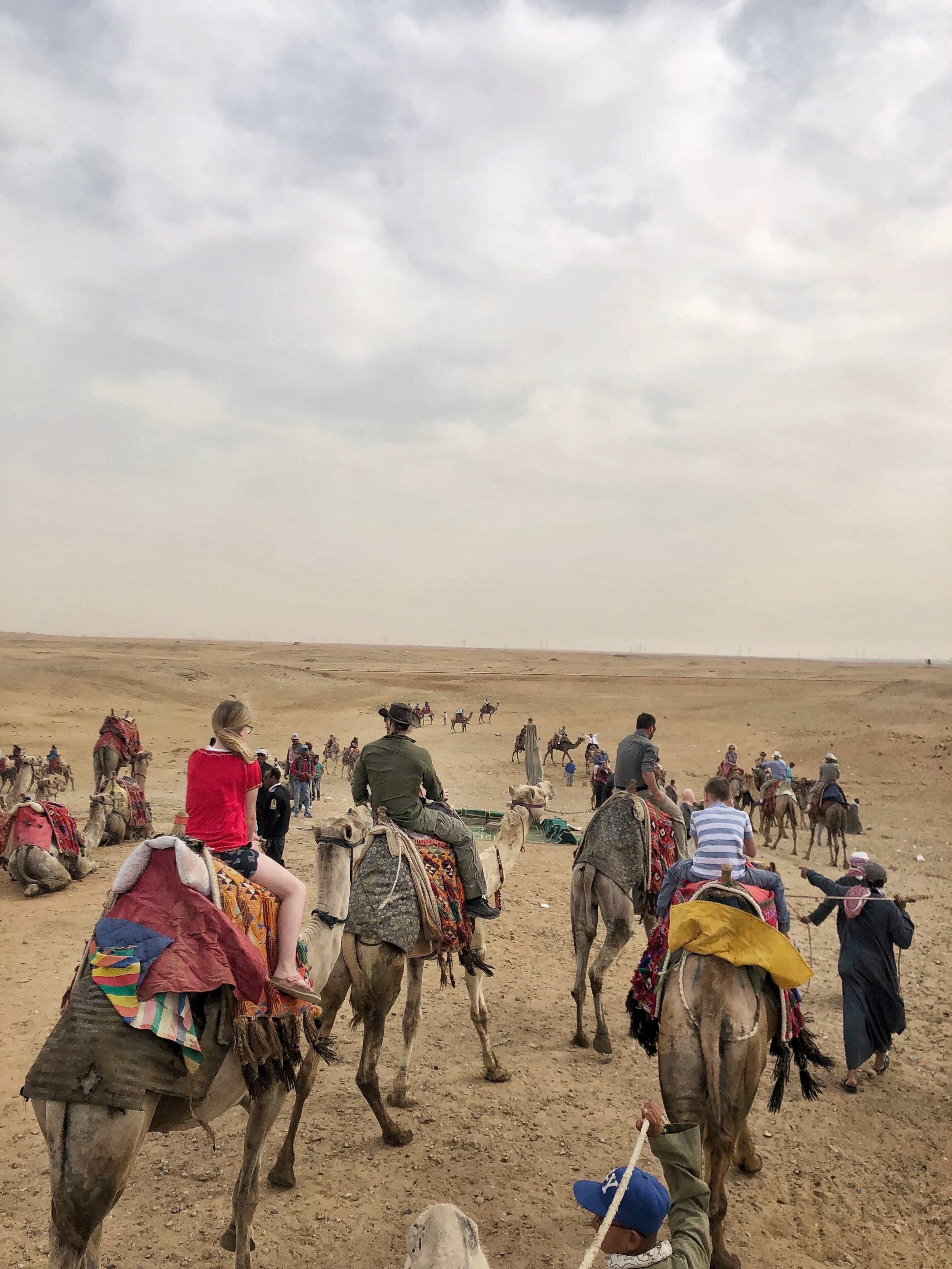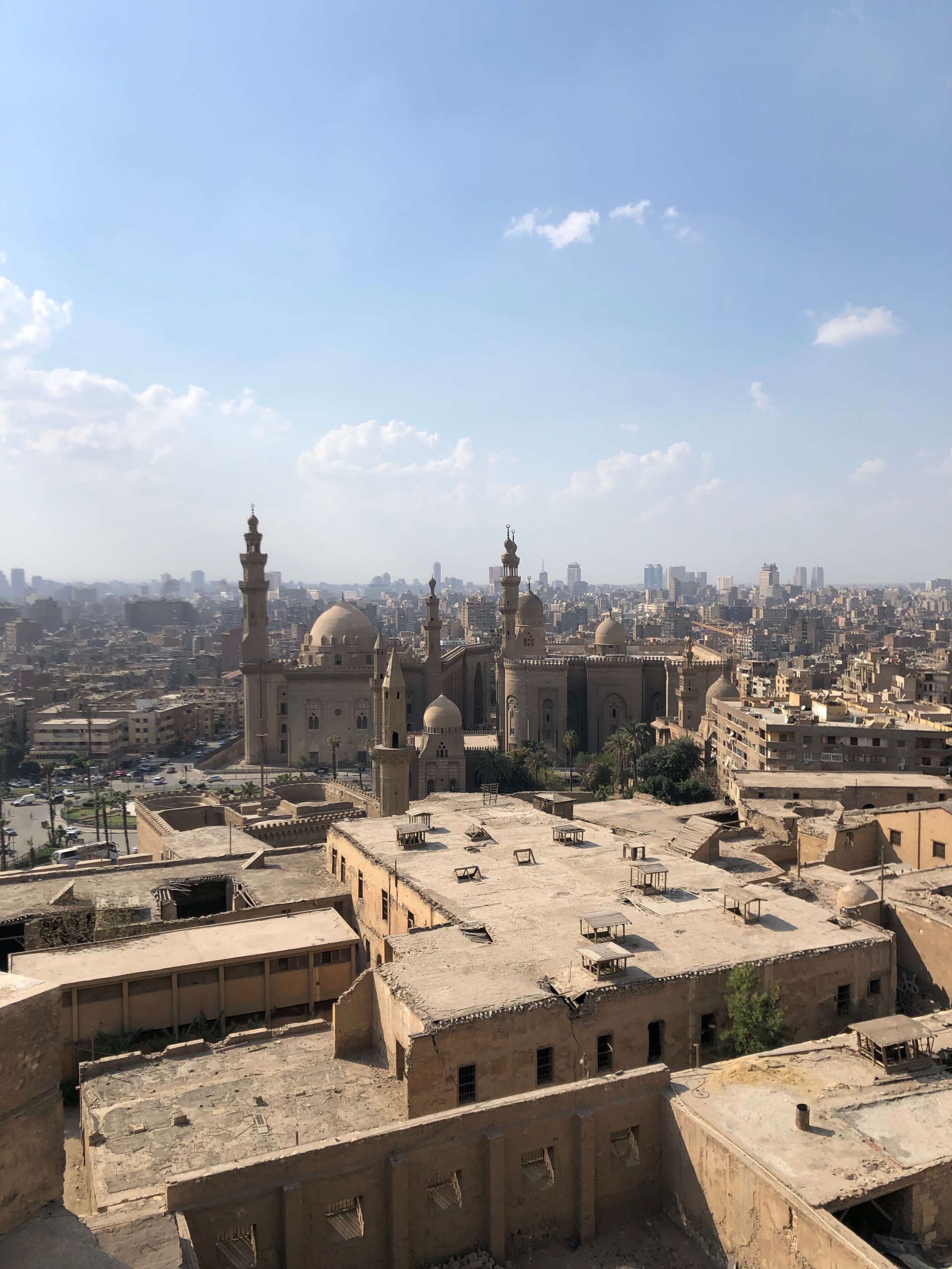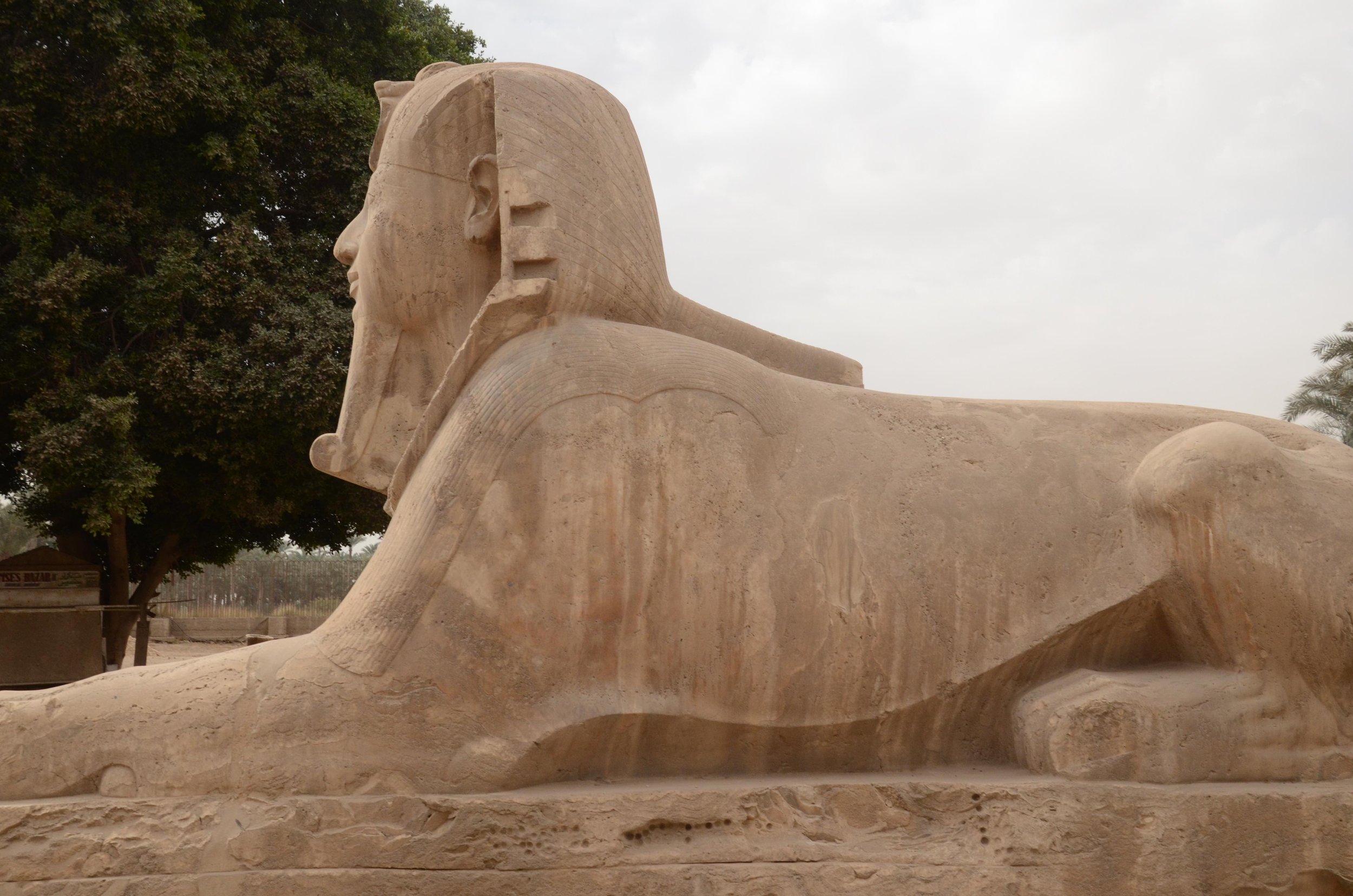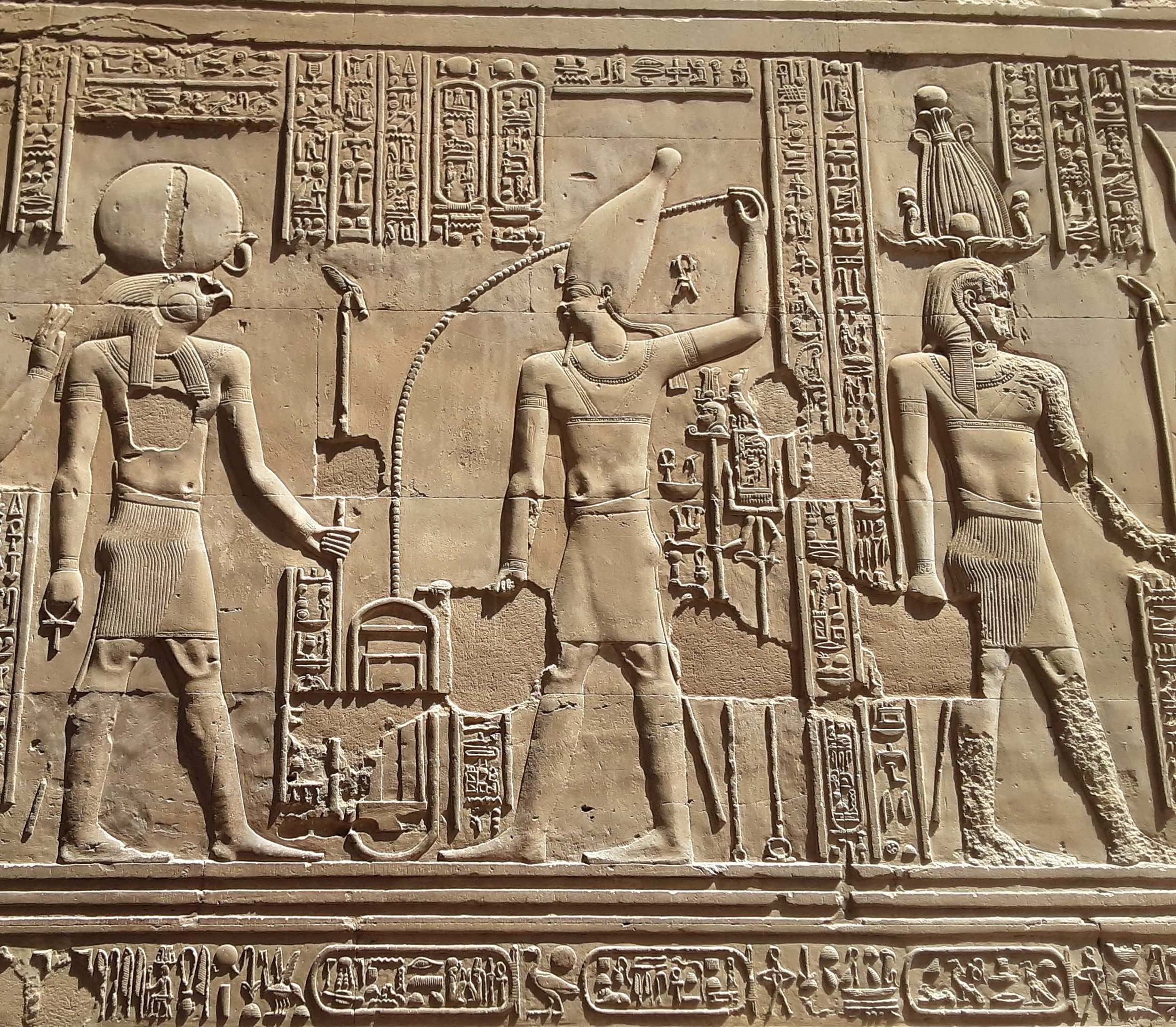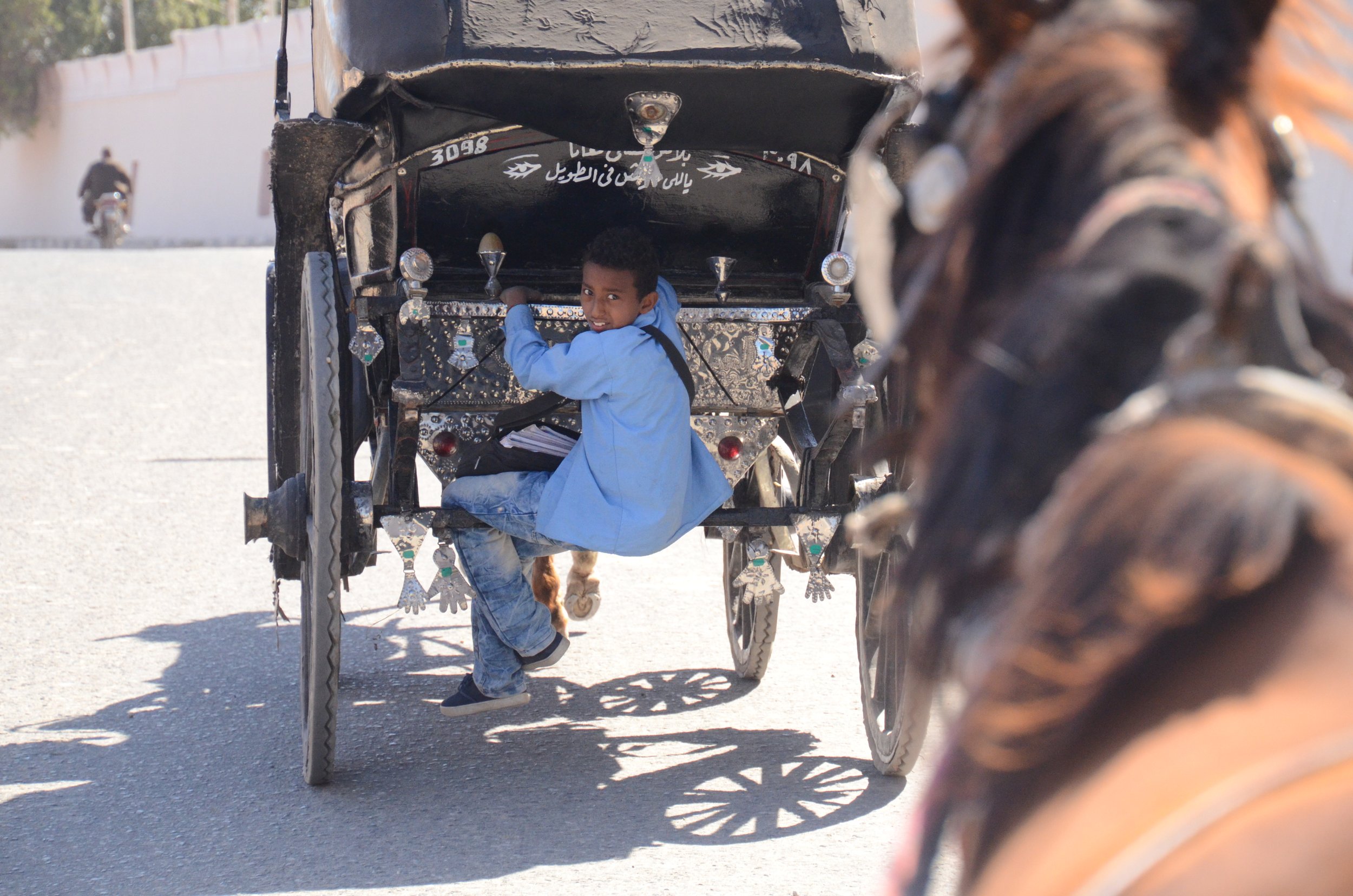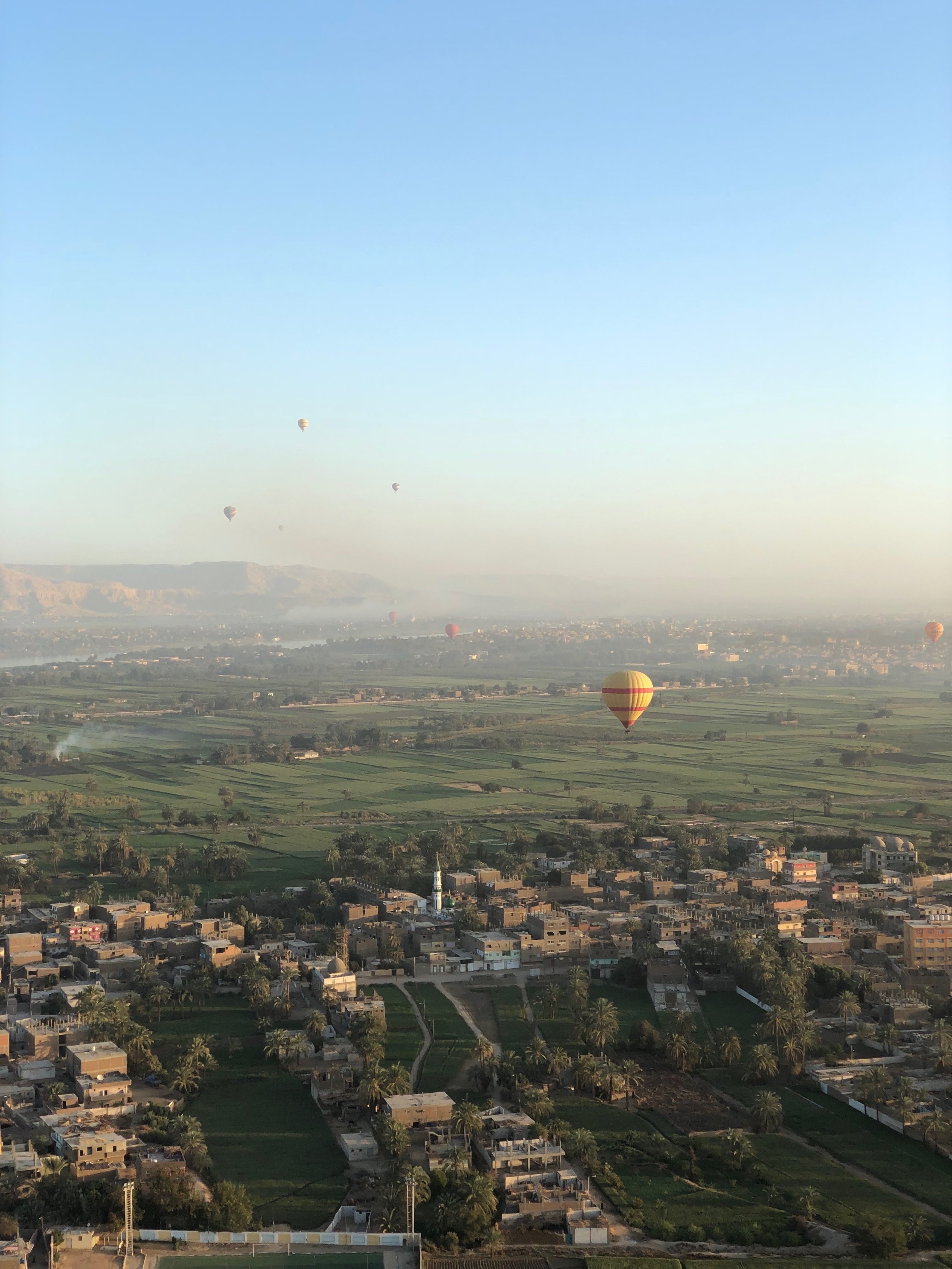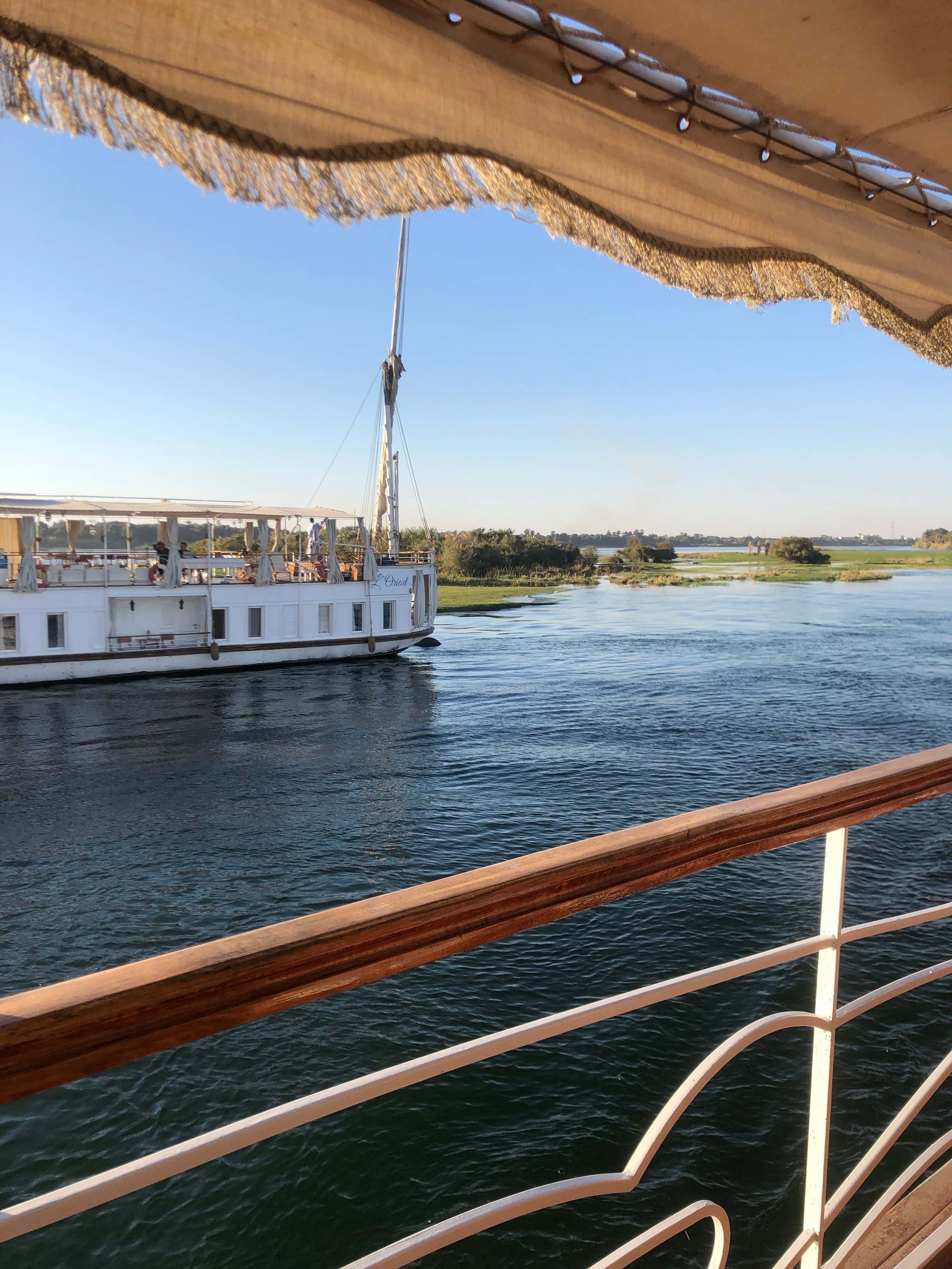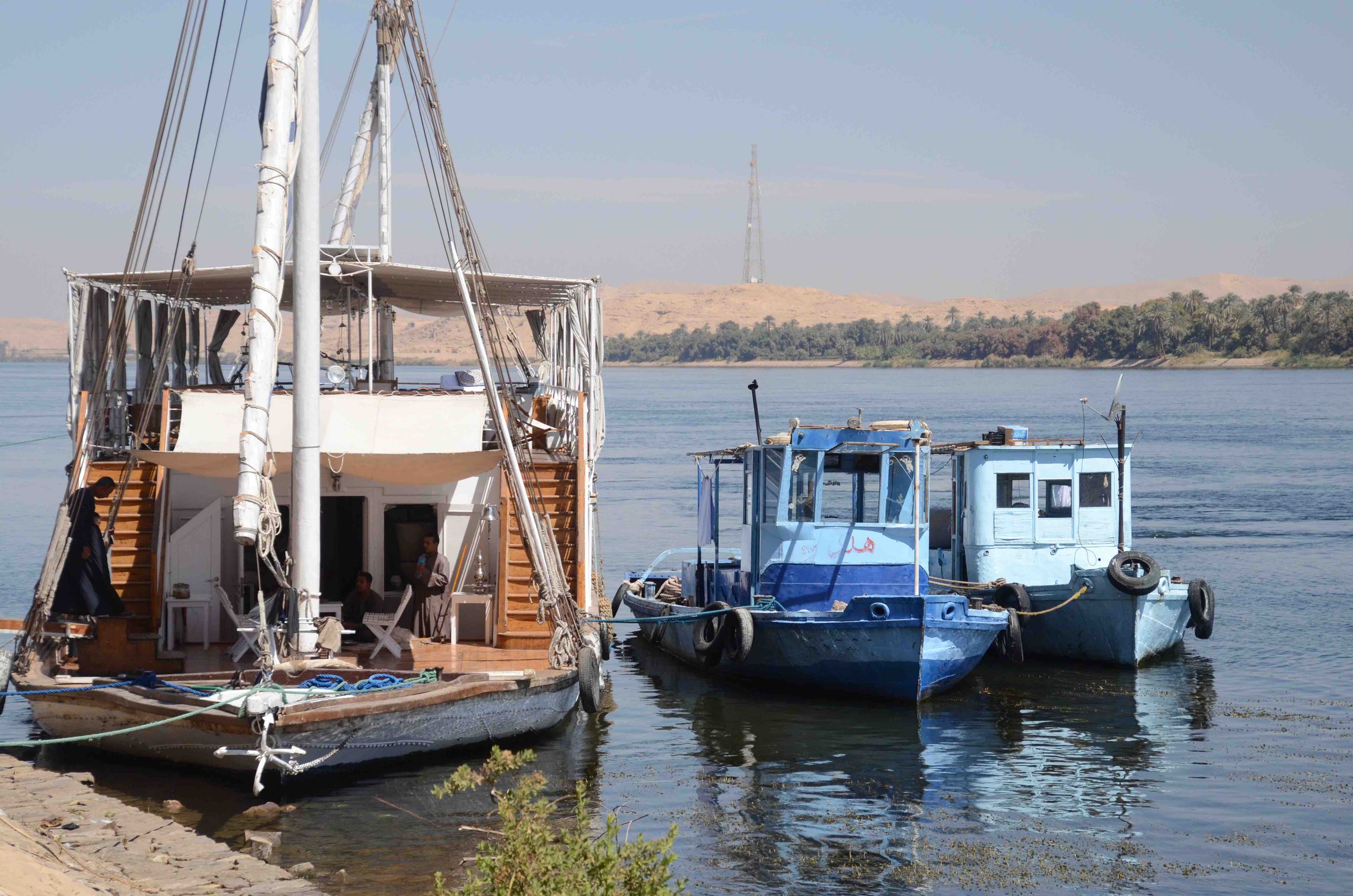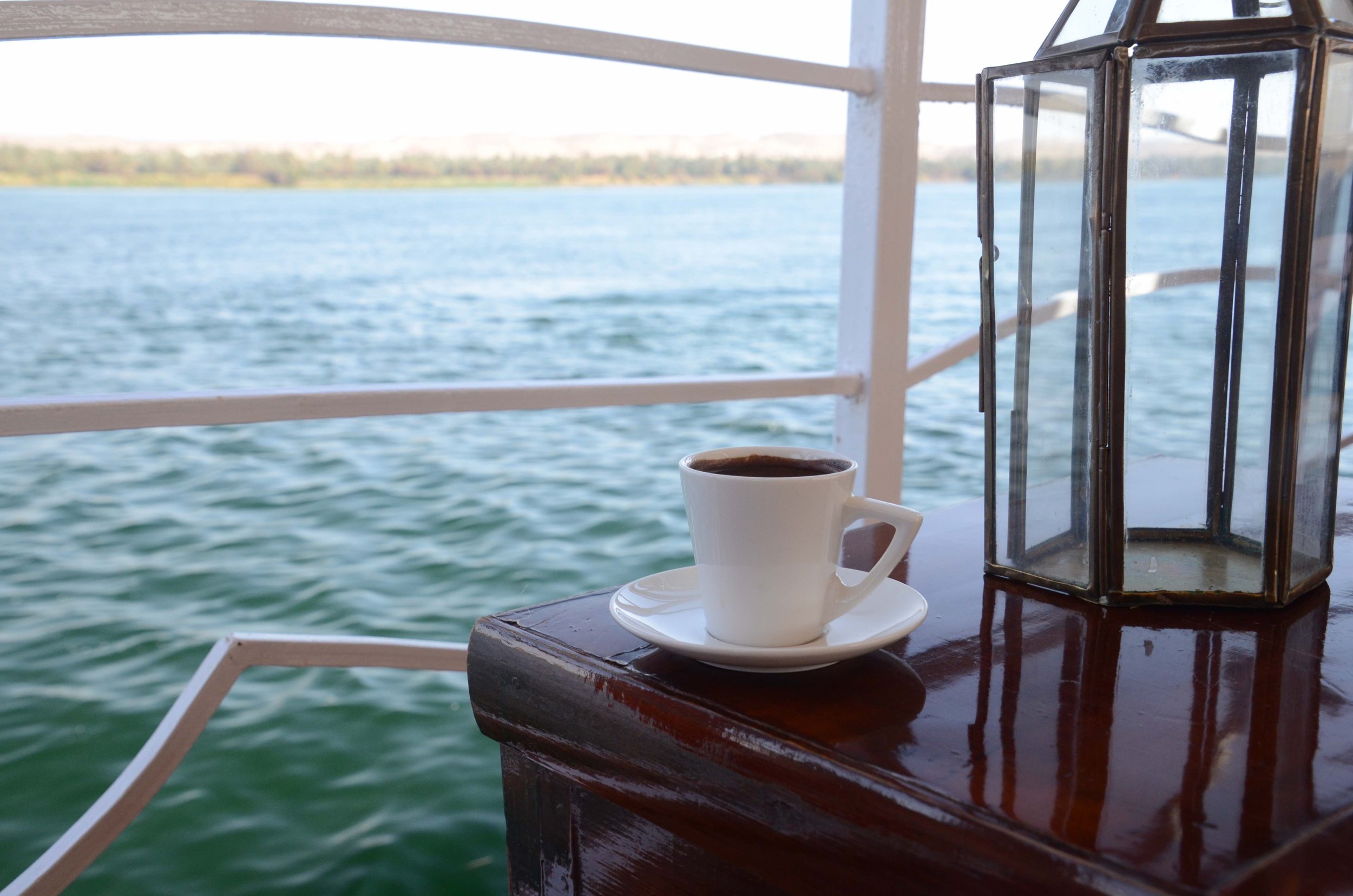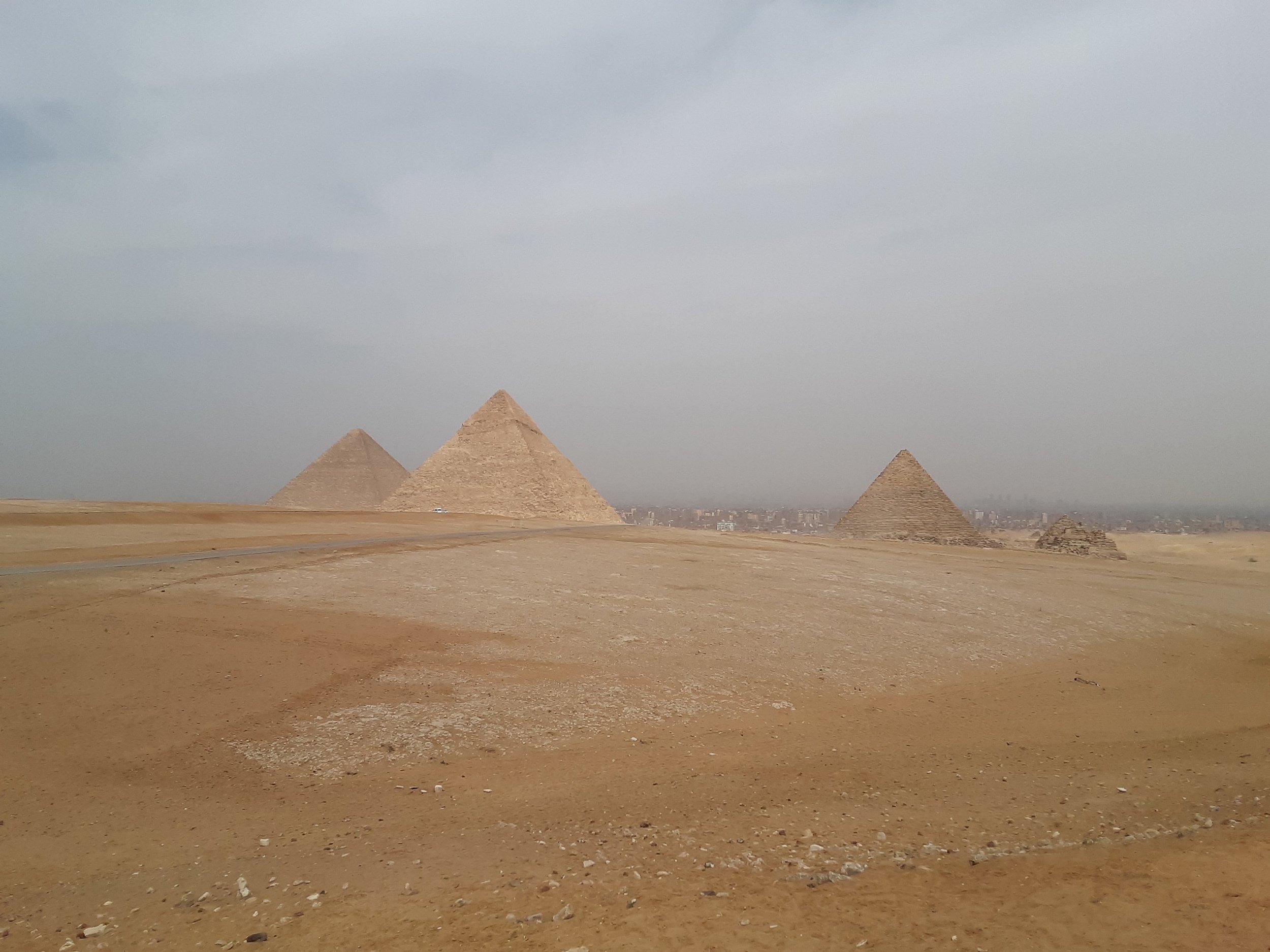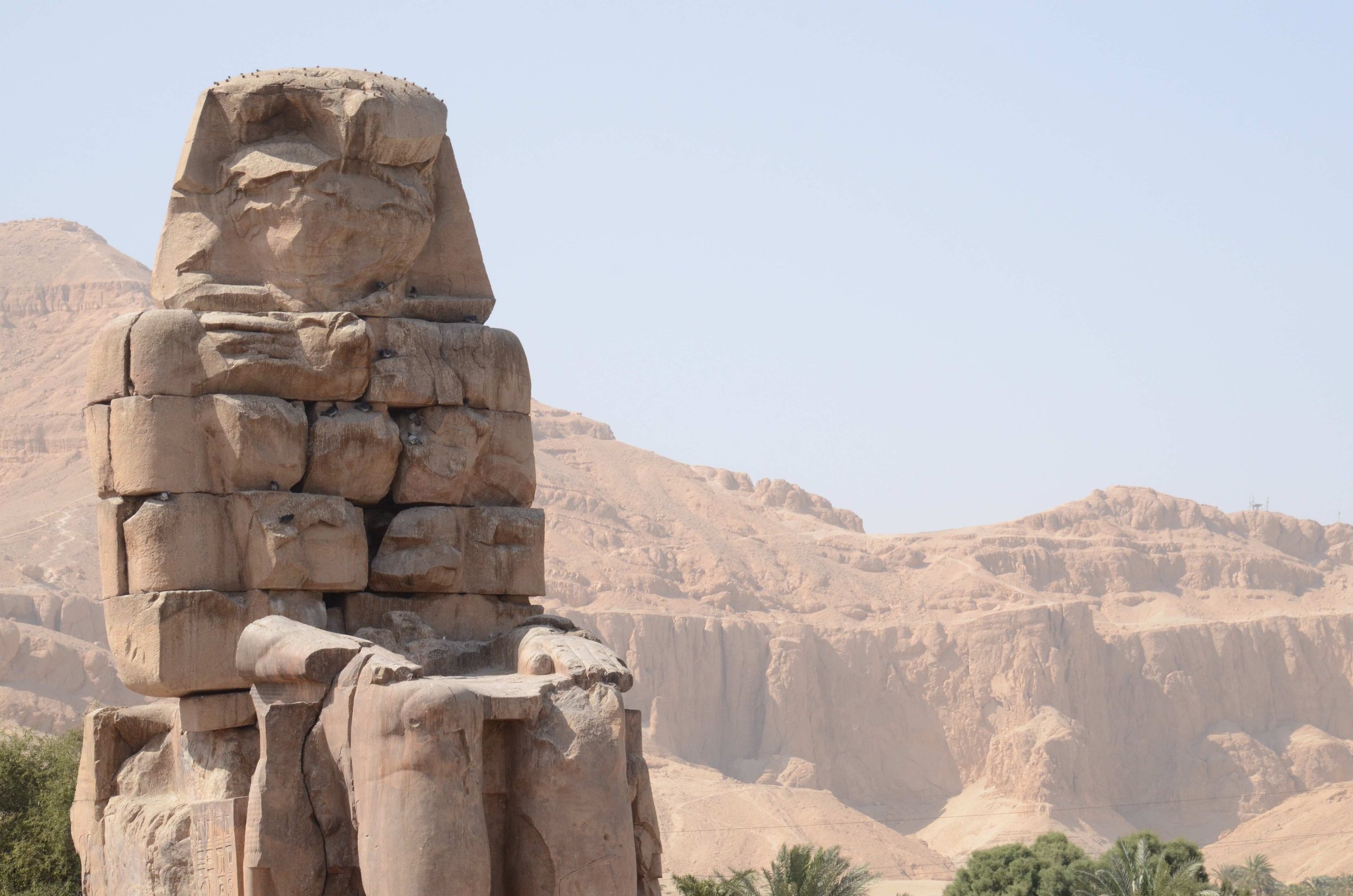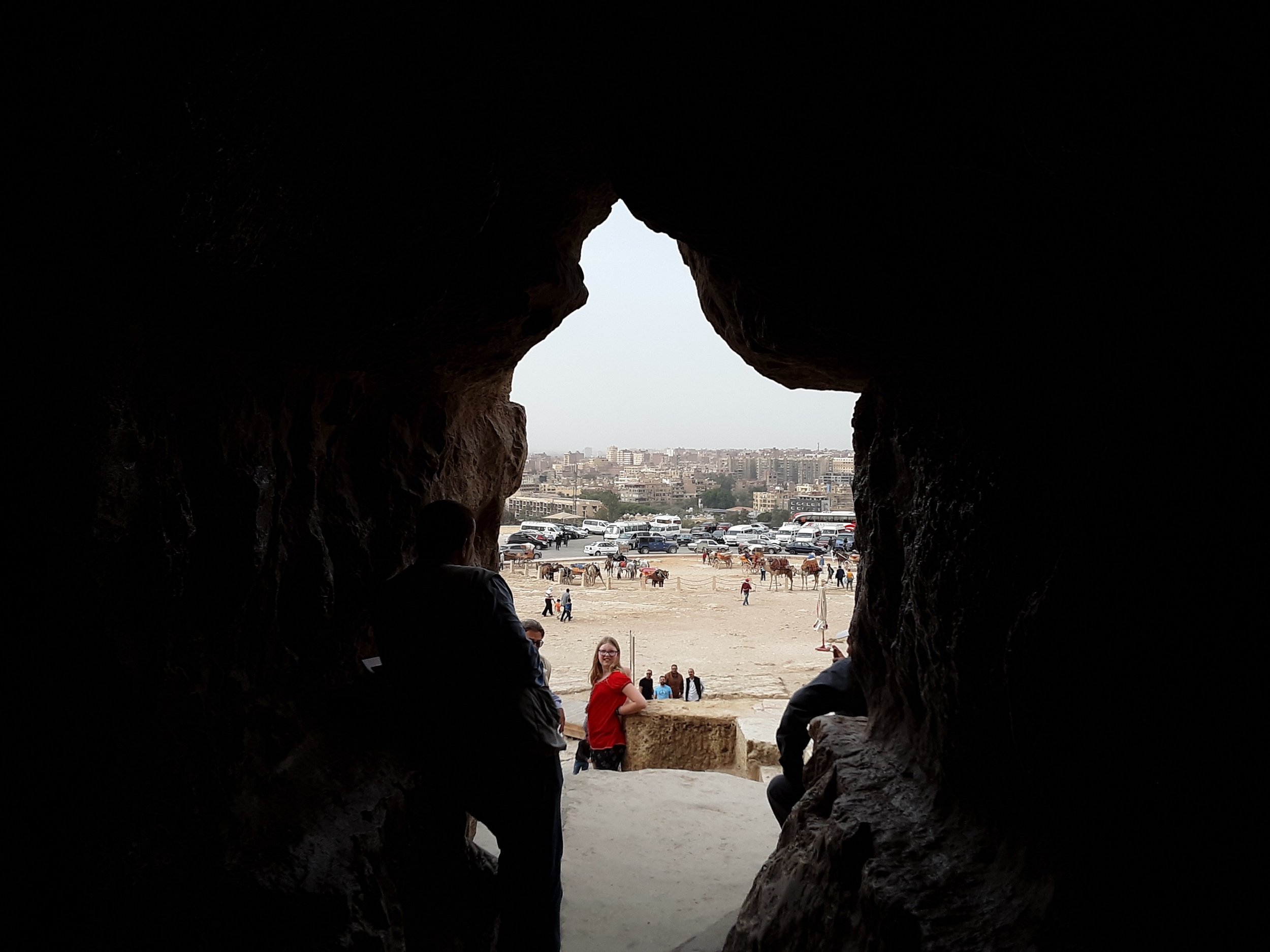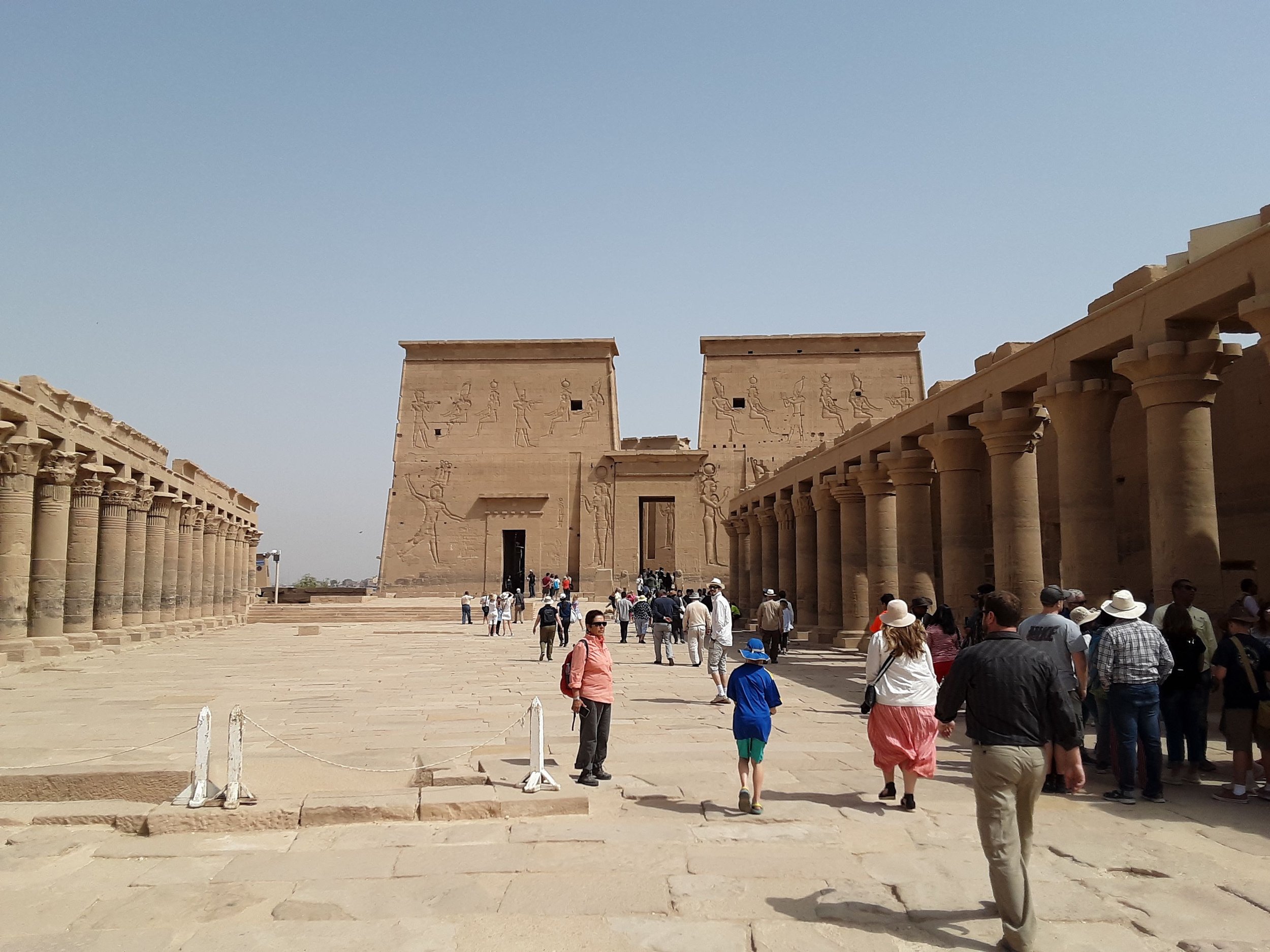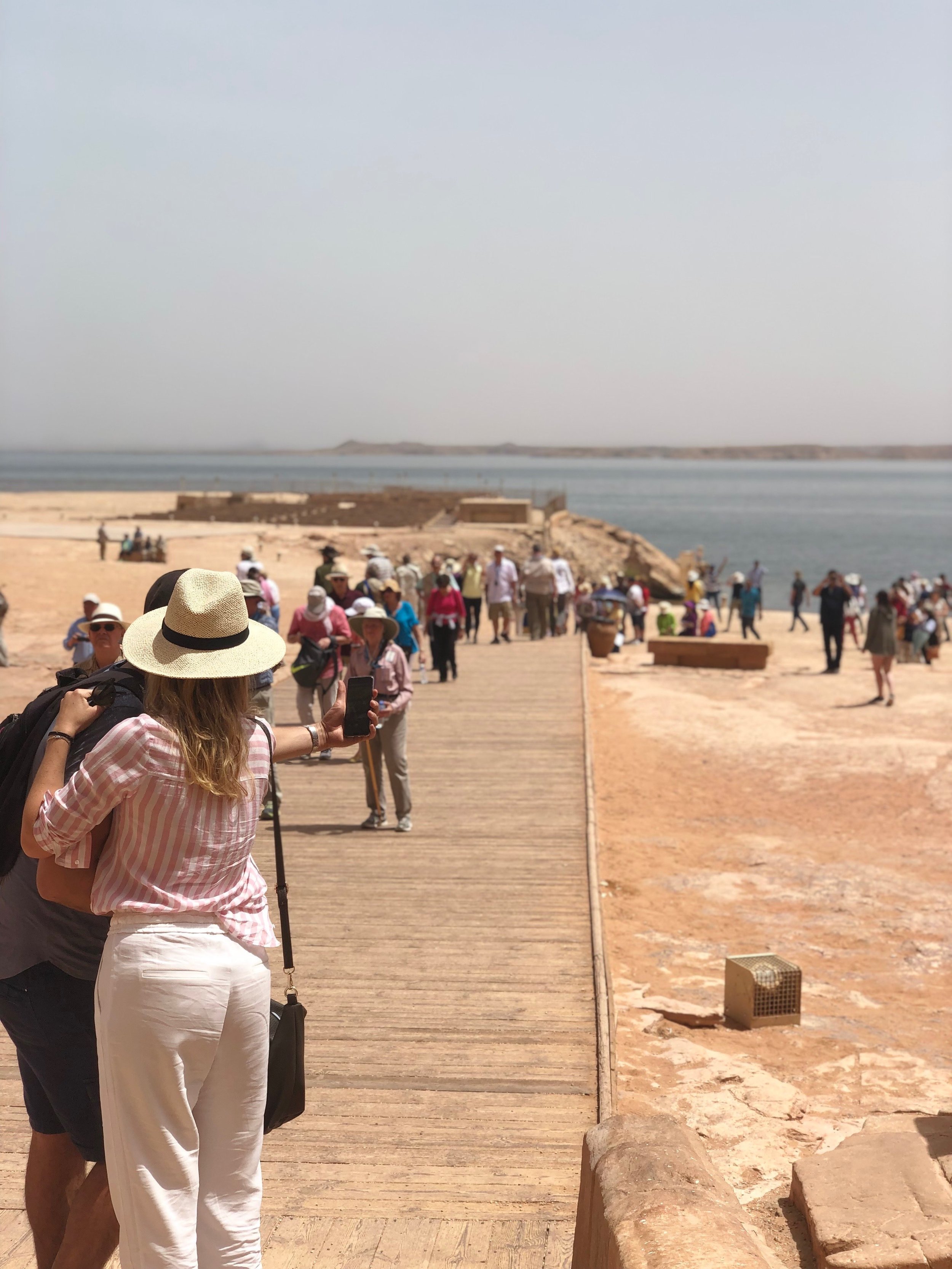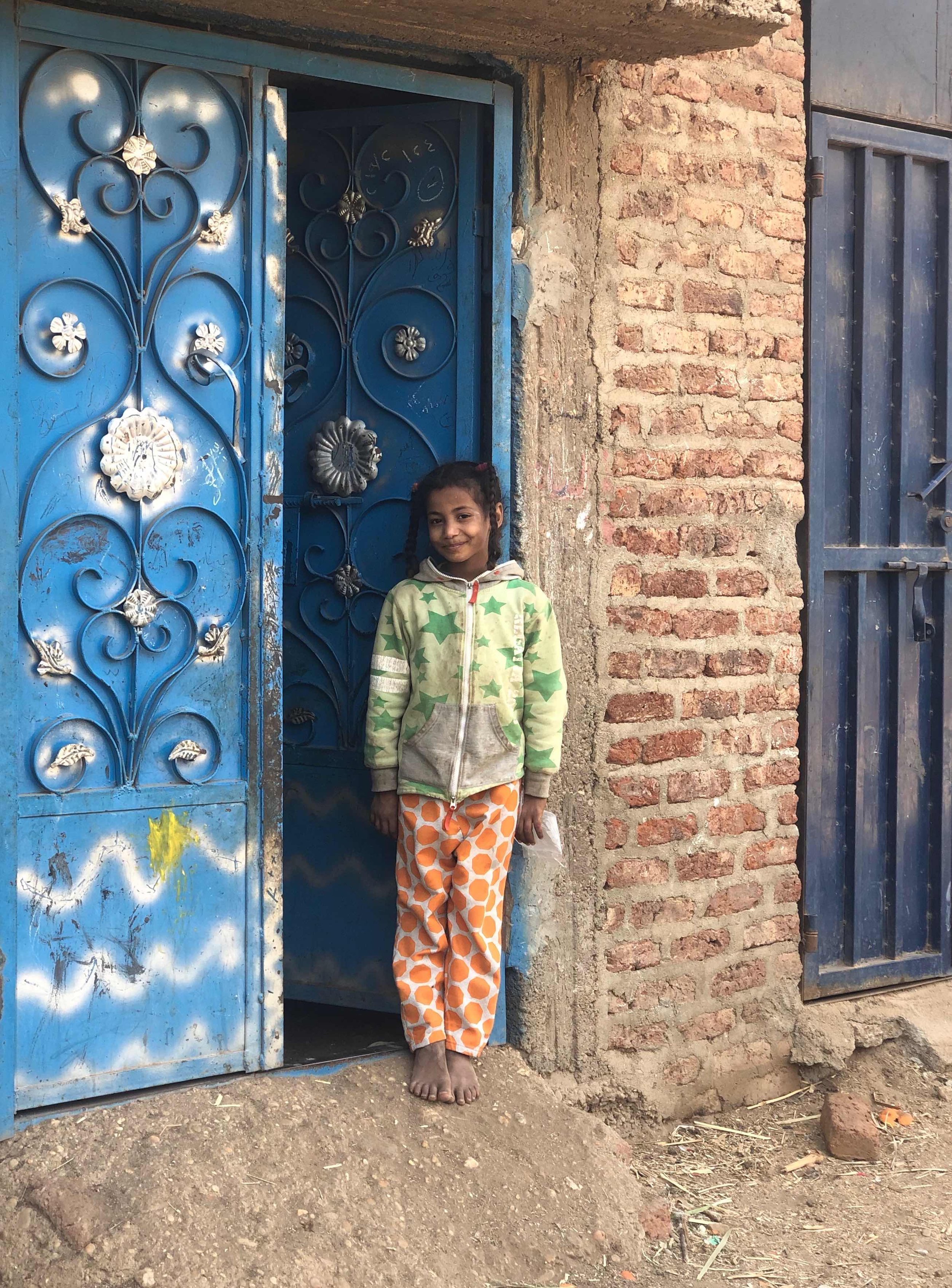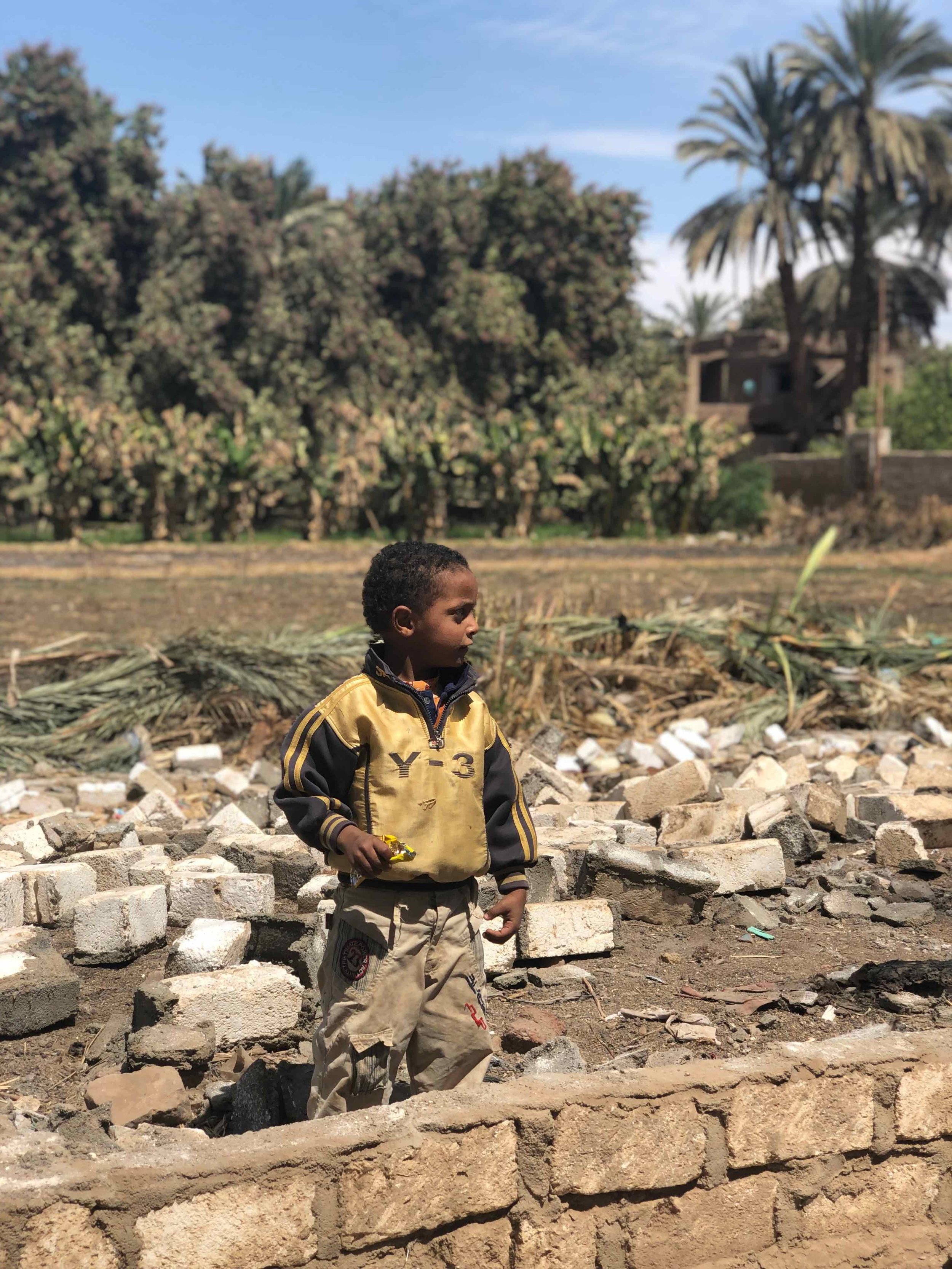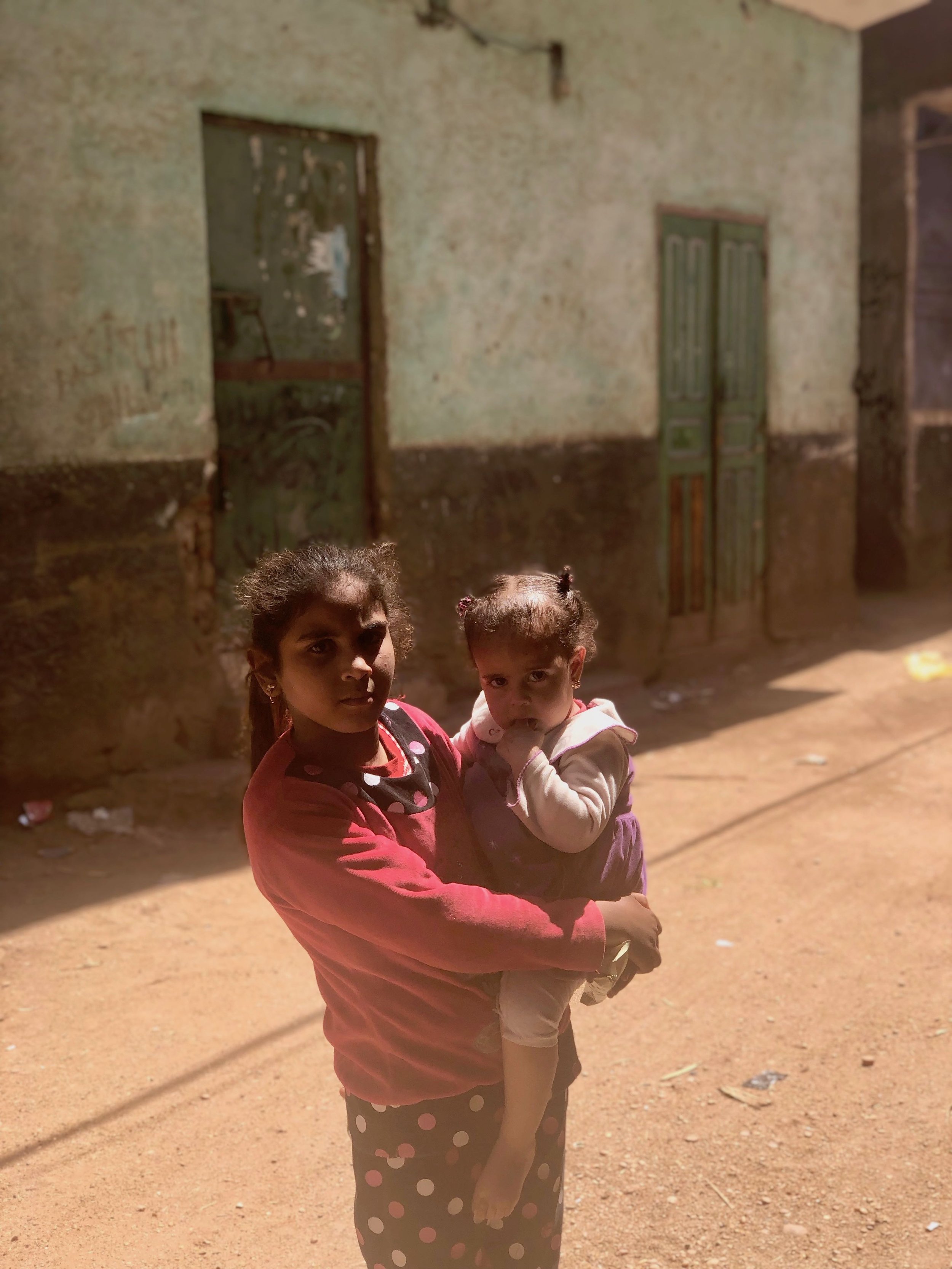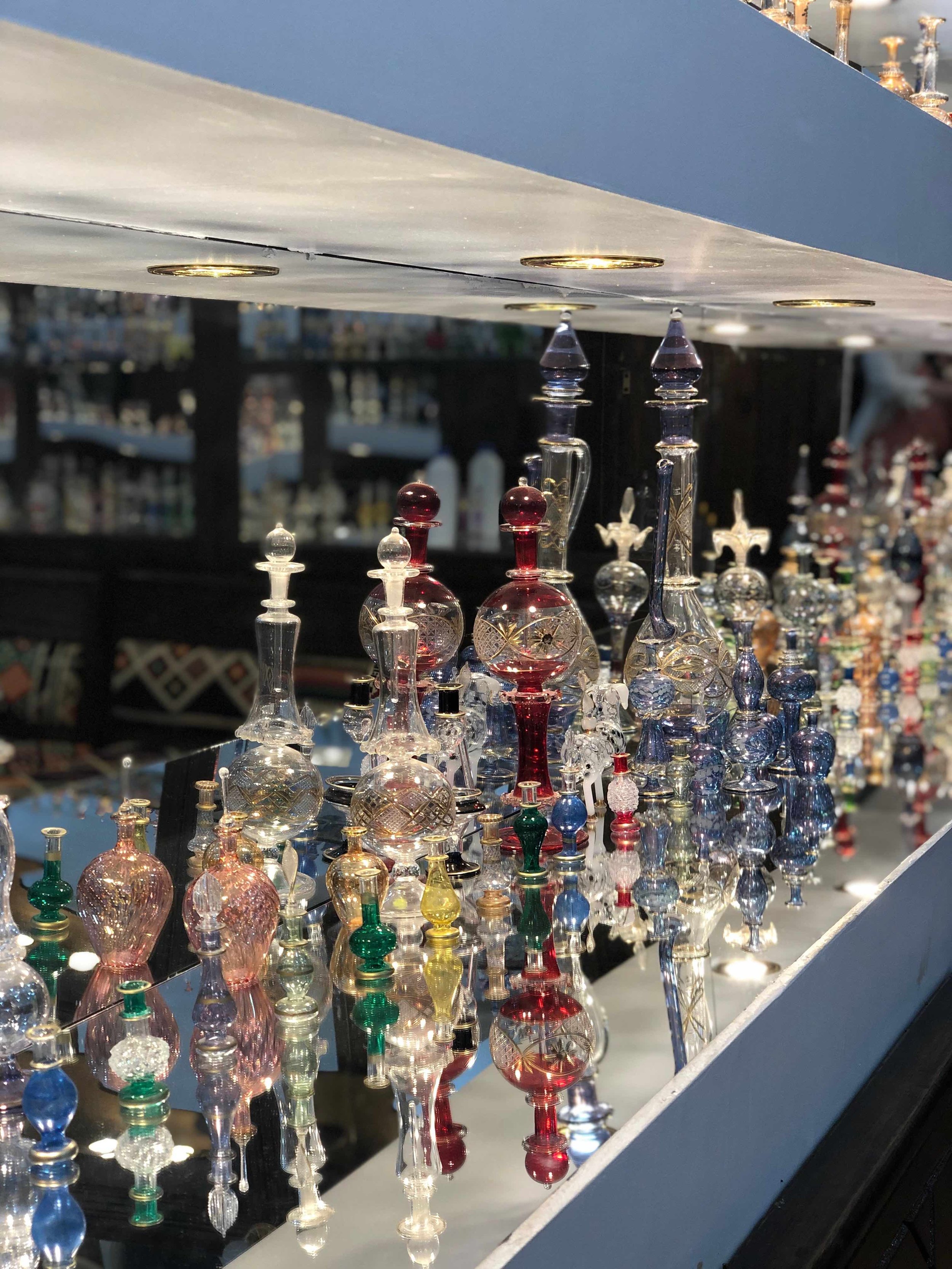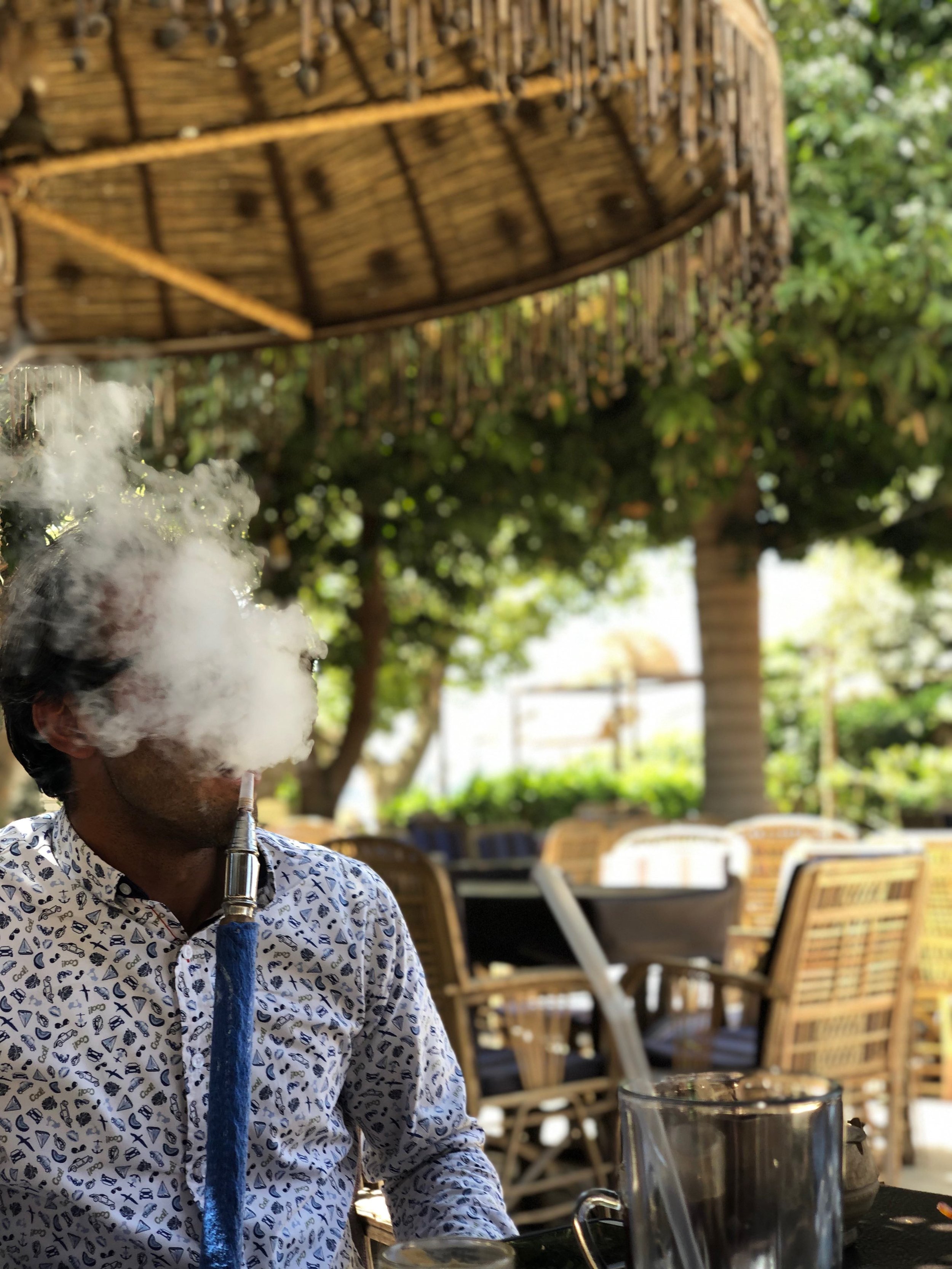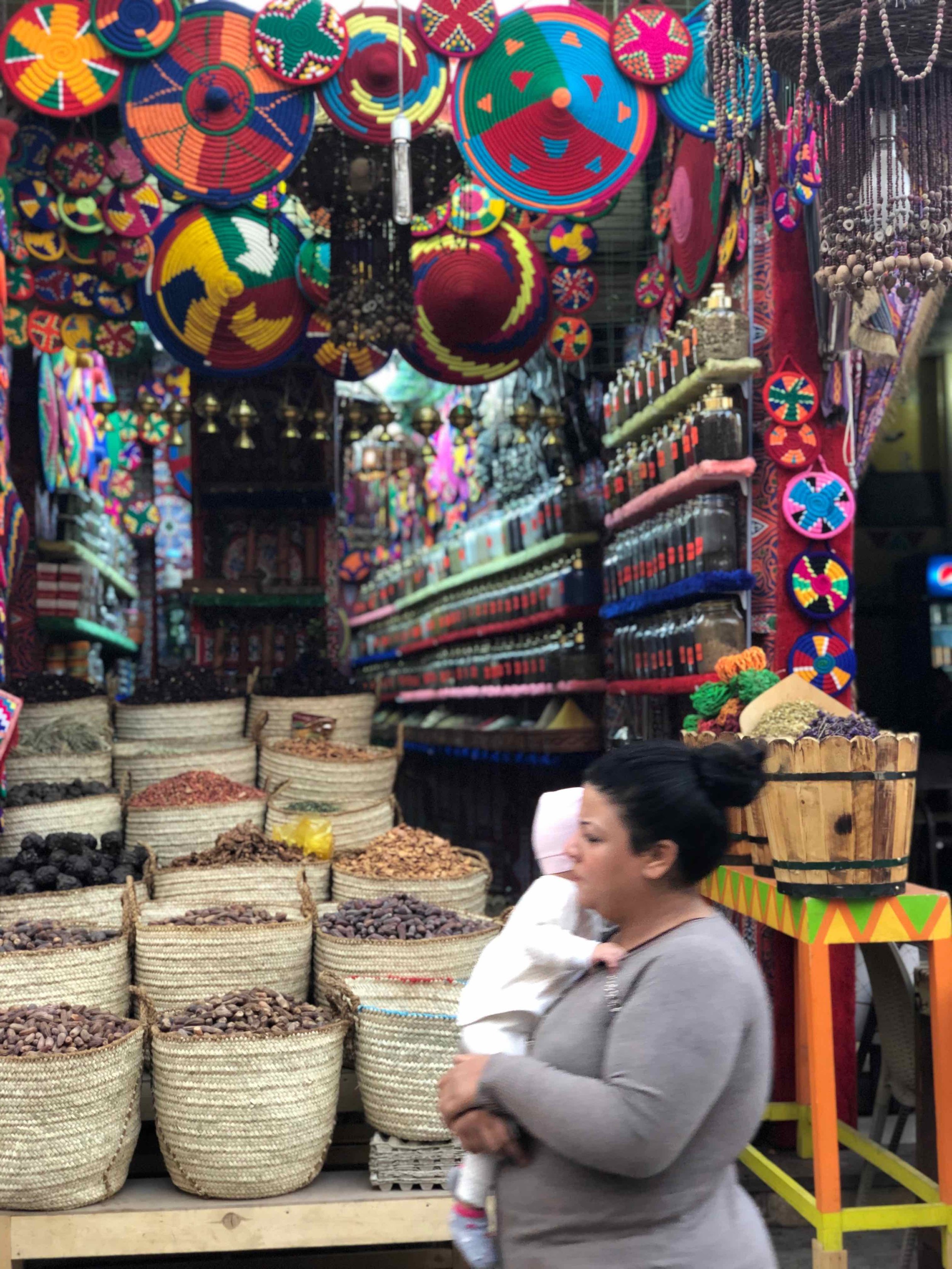What to Know / Egypt
While each of our guides aims to offer simple advice in a format that's easy to navigate and share, we recognize that not all travel enthusiasts can translate that information into an actionable plan. If you would like to purchase a turnkey itinerary that outlines exactly how to begin structuring a visit to Egypt, click here for a sample itinerary. We also understand that not everyone has the bandwidth to take on the details of planning a trip. If you would like to learn more about our Custom Trip design services, click here.
Overview
Whether you’re a seasoned globetrotter or just “winging it,” this travel guide lays out the essential information you need for planning a trip to Egypt.
My advice is based a multi-generational trip with my father (72), brothers (late 30s & single), husband, and two kids (9 & 12). Although we used a high-end outfitter to visit Cairo, Aswan, and Luxor, there is plenty I wish I had known prior to our trip. My key lessons are intended to help anyone considering a visit to this incredible country. The opinions, while entirely subjective, give thoughtful consideration to hind-sight and have been outlined in great detail below. We visited the country for two weeks in March before the pandemic.
The Basics With less than a week of rain each year, Egypt has fantastic weather. I once heard, “it’s clear, warm and yellow all the time in Egypt,” and that’s how I found it. The winter is mild from November to April, when morning’s are comfortable and nights are chilly. Summer runs May through October and tends to be dry and hot. Although Egypt is in North Africa it is considered by many to be a Middle Eastern country. The religion is mostly Islamic, second only to Christianity. The Arabs introduced Egypt to Islam in the 7th century, which is why the primary language is Egyptian Arabic, although you will find Egyptians who can speak French and English quite well. All things considered, it’s not as conservative as other Arab countries, particularly in Cairo, where the presence of an Israeli visa in your passport is not a problem (as it is in other Arab countries).
While tourism took a hit after the 2011 revolution, and the state department lists a level three advisory, that’s the same assessment given to many other countries including Germany, Iceland, Aruba and Mexico. The best way to stay safe in Egypt is to know where not to go. It is advised that you stay away from the western desert, the Israeli border and most of the Sanai Peninsula. Egyptian military has been carrying out a counter-terrorism campaign called Operation Sinai since 2018. The state department suggests as a guideline, to stay in the middle third of the country, and only flying into Shar El Sheikh if you are headed to the Red Sea where international peacekeepers are operating. Luckily this advice allows for safe passage in the Nile River Valley and ancient Egypt where you’ll likely find yourself anyway.
Hire Professionals
This is not this is appropriate vacation to outline and plan by yourself.
It’s pretty rare for me to insist that you enlist the help of a professional travel consultant. However, there are certain destinations even savvy, capable travelers need help, and booking a proper trip Egypt is one of them. Only those who specialize in North Africa and the Middle East will have the experience necessary to support a well-organized, safe trip, that is customized to your preferences. They also have access to the best independent guides.
Much of the success of the trip depends on the guides that are subcontracted on the ground. I can not reiterate that enough. It’s not just nice to have a handler, navigator, and historian, but in many cases it’s actually necessary for access and efficiency. The best guides will be available to stay with you for the extent of your trip, as needed. They will be fit to negotiate and communicate seamlessly on your behalf. They will understand and respond well to the dynamics of your group, and ideally they will be an certified Egyptologist. If you’ve done it right, your guide’s credentials will seem to over-qualify them for the job and you will develop a friendship for years to come.
Now, when considering a travel consultant, you’ll want to be sure the advisor is well-connected to the destination management company. While specialized travel companies often work with Middle East Partners, the booking company handling the final details of your trip should feel seamlessly connected to those contracted for you on the ground in Egypt. Under no circumstance should you hire someone who has never been to Egypt. If your travel agent is consistently telling you she doesn’t have the answers, or she needs to check with her “people,” then she’s not immersed in the process properly enough to facilitate your needs.
Additionally, the customization of your itinerary should not feel complicated. If the company is used to booking group travel or primarily vested in tours, then they’re not the best choice for individual travelers looking to organize a personalized trip to Egypt. Believe me, you will need to be an active participant in developing the itinerary. More than any other trip I’ve taken, it was important to advocate for our interests in order to avoid being shuffled around with the rest of the tourists. Engagement, research and trust in your consultant will keep you from only tapping the surface when it comes to the meaning of these incredible landmarks.
I’m happy to help book a ‘made-to-order’ trip to Egypt based on your family’s wish list. My experience is in subcontracting with High End Journeys, and I feel the level of meaningful detail, personal service and access to stellar guides can’t be beaten. If you are looking for a small group educational tour of Egypt, I suggest you look at the US company, Road Scholar. On the other hand, if you are primarily looking for the most Instagramable sites, I recommend you wait until you have the perspective to avoid those locations and the means necessary to explore the country meaningfully.
Get Your Bearings
If you’re not a fan of geography, then get out your map.
It takes some getting used to, but Upper Egypt is actually south and Lower Egypt is in the north. The Nile River flows south to north and is one of the longest in the world. It begins within in the rivers of Lake Victoria (in modern-day Uganda, Tanzania, and Kenya), and it empties into the Mediterranean Sea, more than 4,000 miles north. While the Nile runs in eight other East African countries it’s only vital to the civilization in Egypt, as 95 percent of Egyptians live within a few miles of the river and it still serves as an important trade route. Many itineraries begin and end in Cairo and include the cities of Luxor and Aswan.
Most of the classic tourist landmarks surround the capital city of Cairo, but you’ll also want to be aware of “New Cairo,” which is a massive suburb that’s been built to alleviate congestion and provide affordable housing to Cairo’s 20 million residents. It’s very important to realize that both the great pyramids of Giza and the Sphinx are literally so close in proximity to the city, you may be disappointed. I know I was very surprised to find it so much less remote than it appears in photographs — like across from a Pizza Hut close.
You’ll hear quite a bit about the ancient city of Thebes, “the great capital of Upper Egypt during the New Kingdom.” You should know that the ruins of Thebes actually lie within the modern Egyptian city of Luxor. In Luxor, you’ll find the most notable landmarks to be the Temple of Deir al-Bahri (Queen Hatshepsut's Temple), The Luxor Temple, Temple of Karnak and the Valley of the Kings.
Eighty percent of the stone quarries from ancient Egypt are located in the Nile Valley along the city of Aswan. Named after the “Swan Stone,” which means ‘granite’ in Egyptian times, the “city of swan” became known as Aswan. Granite found here was used to make sarcophagus burial chambers, columns, pyramids and even Cleopatra’s needle in London. While some of the archeological sites have since since disappeared under Lake Nasser, others can be visited enroute from Luxor. A trip down the Nile aboard a traditional Dahabiya can be arranged along the river at many points of entry and is a “must do” in my opinion.
A visit to Abu Simbel is arranged as a layover on the way to Aswan, in which case your flight lands just long enough for you to take a bus to the ruins, tour and return. Aswan is home to The Temple of Kom Ombo, and is in close proximity to Lake Nasser in south Egypt. As one of the largest man made lakes in the world, the majority of Lake Nasser lies in Egypt, but a section of the reservoir is also located in Sudan.
Itinerary Rear-view
What to consider for next time.
Egypt is 95% desert and there are six oasis villages in the desert, including Fayoum, a couple hours southwest of Cairo. This quieter area of Egypt is also home to the protected national park, Wadi El Rayan where you’ll find desert waterfalls (yes!) as well as ‘moving dunes’ and natural sulfur springs. While this may sound enticing, most Egyptians will tell you that it’s a little lack luster, beautiful, but not much to see that’s uniquely Egypt. If you are insistent on a desert oasis visit, consider Siwa instead of Fayum. If this is something you’d like to consider, look to Western Desert Tours for arrangements.
Because I need balance in my travels, my mind would have appreciated a respite on the west coast of the Red Sea in one of the incredible Egyptian beach towns. Once a small fishermen's village, Marsa Alam is known for its beaches and coral reef and is considered one of the top 10 best places to dive in the world. El Gouna is a modern resort town, near Hurghada. It’s built along the shoreline, full of island lagoons, coral reefs and sandy beaches, including Mangroovy Beach, which is very popular with kitesurfers. Sharm Elshekh is the most famous of the cities, and keep in mind none of them are very close to each other.
“The red sea is one of the most beautiful places you can find in Egypt. If it were me I would choose Sahl Hasheesh belonging to Hurghada, but any of them you will love.”
- Mohamed Taher, Egyptian Guide
Finally, I may have also carved out time for Wadi Al Hitan, also known as the Valley of the Whales — home to hundreds of gigantic whale skeletons and infinite fossils. The area depicts a time when Egypt was covered by the sea and offers a magnificent per-view into the evolution of life. My 10 year old son would have loved that.
No hindsight is complete unless there is something you could have done without. I feel personally that while you can’t avoid the Great Pyramids of Egypt and the Sphinx, you can absolutely appreciate the grandeur without the camel ride. Additionally, I shrug at the mosque of Sultan Hassan at the Citadel of Cairo. It is often considered a “must see” but for us, it was far less interesting than almost every other stop on our itinerary. The only redeeming experience was happenstance and took place at the Al-Rifa'i Mosque where we witnessed an Iranian soldier perform an original piece of music at the last resting place of the Shah of Iran. The part of planning you’ll never capture.
The “Can’t Miss” parts of our trip.
No where else will you find such a concentration of history and artifacts than inside the current 5.2 million square foot Egyptian Museum in Tahrir Square (soon to be relocated to the Grand Egyptian Museum near Giza). While such treasures are overwhelming to grasp and impossible to absorb in a single visit, you just can’t miss this expansive homage to one of the world’s oldest civilizations. Oh, and be sure to pay for the mummy room and jewels display, they are both worth it. I feel it’s important to visit the museum in combination with the pyramids, for context.
Before Thebes in Luxor, Memphis was the first capital, and Saqqara was its cemetery. The Saqqara Cemetery (also spelled Sakkara) is one of the most important archaeological sites in Egypt; a vast, ancient burial ground, site of the oldest complete stone building known in history, home to numerous pyramids, including the world-famous Step pyramid of Djoser. There is lots to see and you’ll want to stick to the best examples, so your Pyramid site-seeing doesn’t feel redundant. For me, Saqqara was even more fascinating than the Great Pyramids of Giza.
“Much of your experience in Egypt will feel like an educational master class and by no means leisurely, so you’ll need to commit to that. The past is present everywhere in this country.”
On our first morning in Luxor we booked at hot air balloon flight, where we marveled at the city’s treasured monuments from above. Traveling over the Nile happens only a handful of times a month and clear air allowed for us to experience that journey. Landing in a field and greeted by local farmers was equally charming and exhilerating. Even if you have ridden in a hot air balloon before, the landscape in Egypt is so breathtaking and the sky so quiet, it really can’t be missed.
While I already mentioned the luxury Nile cruises aboard a traditional Dahabiya, I didn’t make note that most travel between Luxor / Esna and Aswan. If you’d like to avoid the heat of the summer you need to look at sailing April to October. I felt a private cruise was the way to go just due to the flexibility and personalized attention. We were contracted through Lazuli Voyages and had a wonderful time. Our guide also recommended Merit Dahabiya. However, Viking and Uniworld (12 days in and out of Cairo), Steam Ship Sudan (6 days) and Sanctuary Cruises (4-8 night options), offer a bit larger vessels, and in some cases more amenities.
Generally if you travel upriver against the current it takes more time and will allow for more excursions along the way. Downriver is of course an option as well. Something to know to avoid disappointment is that “sailing” is a loose term, as tug boats are mainly used to keep pace. We sailed for five nights, privately upriver, and we’re still able to enjoy downtime on the Dahabiya. Ships often host a djellaba party, with a festive dinner and staff dance party. It was fabulous but had I expected it, I would have planned to wear some traditional garb.
“Don’t drink any water or eat anything undercooked aboard the Dahabiya. The generators do not run at night and you do not want to be ill during that time (if you get what I’m saying?)”
You may discover that if an overnight cruise down the Nile doesn’t fit into your itinerary, you can still spend time on the river sailing at sunrise or sunset on a Felucca (a traditional wooden sail boat). While this is an option, I wouldn’t recommend staying aboard one of these smaller boats for more than a couple hours.
Anyone who travels south along the Nile will notice the villages of Nubia near Aswan. The surrounding little islands and on the west bank are home to the Nubian people displaced by the dam. Here they speak their own languages and have specific traditions that are different from rest of Egypt. The small population of inhabitants descend from one of the earliest framework of civilization. A visit here is really ‘a must.’
Know Your History
A brief overview will get your quite far when absorbing all that Egypt has to offer.
By 5,000 b.c. the people of Egypt were farming, weaving and making pottery, and in 3,000 b.c. they invented writing.
Hieroglyphics was the first written language, but it’s uncertain if it was ever spoken. Other scripts found in Egypt, include Hyraticc, Demoratic and Coptic— which is an Ancient Greek language that uses the Greek alphabet. You’ll find less hieroglyphics on the monuments resurrected under Greek rule. If you want an easy way to read markings like hieroglyphics, check out this Step by Step website.
The first Egyptian pharaoh was King Menes who is credited with uniting Upper and Lower Egypt, and the founder of the First Dynasty. At this time Memphis was the capital, and the society was highly organized. The country at the time, was divided into 42 nomes, and as such, there are 42 Gods to represent the forty-two provinces of Upper and Lower Egypt.
The Nile Valley is considered upper or southern Egypt, and it’s represented by the white crown, the vulture, and the lotus flower which looks to the sun.
Lower Egypt alternatively is symbolized by the red crown and the cobra. The papyrus is the symbol of the sun and the sacred plant of the north.
Ancient Egyptians see everything in the context of a cycle.
They believe the goddess Nut swallows the sun disc every night and gives birth every morning. The sun sets in the west, and is what makes the west synonymous with death.
A new moon is born each lunar month. The moon is born little and then it starts to die. This kind of rebirth is for them, evidence of an afterlife. While Egyptians may seem preoccupied with death and the afterlife, in reality it’s just an expression of how much they cherish life. Masks, statues and mummy portraits are recognition of ‘a great life,’ and a soul that lives on forever.
This first period of Egyptian history ended in 2181 b.c. and was named the Old Kingdom. It was during this time, the pharaohs built the first pyramids including the earliest colossal stone building, The Pyramid of Djoser — a step pyramid, built during the Third Dynasty for the burial of Pharaoh Djoser. Eventually the central authority in Egypt weakened, the country split into parts, and civil war ensued. This period is called the first Intermediate period and lasted until the Middle Kingdom was founded.
The Middle Kingdom lasted until 1650 b.c and was a time of great art, literature and military success. Followed, of course, another period of unrest, The Second Intermediate period. During this unrest, the Palestinian people seized northern Egypt while native Egyptians kept rule over the south. Eventually the Palestinian people (called Hyksos) were driven out and the country reunited, marking the beginning the New Kingdom.
Defined an era of great wealth and power, including rule over Nubia, parts of Palestine and Syria, The New Kingdom lasted from 1550 to 1070 b.c. It’s during this time, new temples were built at Thebes and the pharaohs were buried in the Valley of the Kings. This was also the time of the boy King, Tutankhamen — known for worshiping “the old gods.” As well as the era of Hatshepsut — significant to Egyptian history as the fifth pharaoh of the Eighteenth Dynasty and the second historically confirmed female pharaoh. Each dynasty is 100 years. Hatshepsut came to the throne of Egypt in 1478 BC and has one of the most fascinating of stories. She is also one of the most prolific builders in Ancient Egypt and responsible for Temple of Deir al-Bahri, a must see landmark on any trip to Egypt. When the new kingdom collapsed it gave way to a period of disunity, aptly named The Third Intermediate Period. A time from which Egypt never regained its former glory.
Beginning in 880 with the Twenty-third dynasty and ending in 332, Egypt was ruled by three foreign dynasties (Libyan, Nubian and Persian) before Alexander the Great came from Greece to fight the Persians (not as an invader as some may think). After Alexander’s death at 33 of malaria, his empire was divided and the Greek general Ptolemy took over. Ptolemy’s descendants ruled for 300 years, the last of which was Cleopatra.
In 30 b.c. Egypt dissolved as an independent Kingdom and became a province of the Roman Empire. Some say the real end to Ancient Egypt came in 70 AD with the spread of Christianity. This meant the end of the old religion and the end of Ancient Egyptian culture. It is believed that Egypt was chosen by God, as it’s mentioned in both the bible and in the Quran. Moses was Egyptian and Jesus lived there for three years.
As we look to Egypt’s more modern history we must consider its recent leaders. Nicely outlined by Introducing Egypt, you’ll hear a lot about the Albanian commander Muhammed Ali who is considered the founder of Modern Egypt. Under his successors, Egypt began to loose it’s power and was occupied by the British from 1882 until 1956. During WWII under the popular King Farouk, British forces withdrew from most of the country, exception being the area surrounding the Suez Canal. Anti-British feelings continued and in 1952 a military coup overthrew Farouk's monarchy, establishing the Republic of Egypt. Since the Revolution, Egypt has remained independent, however the ensuing years have been characterized by conflict with Israel and its supporters. President Sadat ushered in improved international relations but was assassinated in 1981. President Mubarak followed, but is mainly known for the social unrest, political corruption and police brutality which gave way to the 2011 Egyptian Revolution. The current leadership, Abdel Fattah el-Sisi has been President since 2014. There are still areas of Egypt that continue to be a high risk of terrorism despite the heavy security presence. However, tourism remains integral to their economy and if you exercise reasonable precautions it is safe, even in 2021.
"You can gain a lot of context in watching the documentary 'Egypt's Sunken City' or listening to 'The History of Egypt' podcast before your trip"
Accept Over-tourism
Modern life coexists among glories of the past, but you must manage your expectations.
Travelers have been inspired by Egypt’s ancient past and fascinated by its breadth of antiquities for hundreds of years. Today’s visitors will inevitably find a mix of immersive cultural experiences and unique landscapes, but they will also witness the jarring modern growth that surrounds the remnants of an abandoned lifestyle. In many parts of Egypt, pollution envelops it’s mud brick villages, traffic muffles the call to prayer, and glass high-rise buildings look down on historic temples.
In addition to this conflict of worlds, many of its monuments are massively overwrought with tourists. I mentioned earlier that the great pyramid of Giza as well as the Sphinx are both center to much of the hustle and bustle that surrounds them. You should expect to see security checkpoints at every single building, hotel and museum to manage crowds and minimize risk. It’s up to you, whether this makes you feel more or less safe. Cameras and phones are a watched commodity so be respectful with your photography, and try to absorb the experience. Certainly don’t bring a drone to Egypt.
Now this is not to say you can’t experience these landmarks peacefully or without distraction, it just means you have to be thoughtful and deliberate about designing a balanced itinerary.
Consider the Culture
You’ll want to be mindful of certain important cultural differences so that your ability to enjoy yourself is not compromised.
One of the first questions I had in considering a trip to Egypt was how difficult is it to find and drink alcohol? Let’s be honest, vacation is the time to indulge and I wasn’t about to miss an opportunity to have a mid-day beer. So here’s the scoop. Alcohol is forbidden to strict Muslims, and for that reason you should not be surprised if a restaurant is alcohol free. If it matters to you, just ask ahead of time. Beer is generally the safe choice and Stella and Sakara are both delicious local options.
On the other hand, I found the cost and access to hard alcohol quite a bit more difficult. If you’re interested in a cocktail or anything made with booze for that matter, specifically vodka, you can forget it. At the hotels, an ounce will likely be in line with what we might pay for a good bottle at home, and it will quickly get expensive if you’re not careful. Instead I suggest you opt for wine and the Egyptian wines are actually quite good. Aboard the Dahabiya you can request they stock your favorite beer and you should feel comfortable bringing on board your own bottles of liquor, best purchased from the duty free shops on arrival.
Street food is very common in Egypt and if you’re allowed the opportunity you should join Laila from Bellies En Route on a tour of Cairo’s most culinary streets (you can learn more by listening to the podcast, Frying Pan Adventures, episode 31). Obviously the nations food has been influenced by those who’ve historically occupied the country. Most notably France and Turkey, as well as neighbors Lebanon and Greece. You’ll find local spiced meats of beef, poultry or mutton, loaded with cumin and coriander, but never pork. Adventurous eaters will enjoy ta’ameya (fried crushed fava beans), Kamounia (beef and liver stew), mulokhaya (garlic and chard soup) and my favorite koshari, which is rice, lentils, pasta, and chickpeas with fried onion in a garlic vinegar dressing and spicy tomato sauce. Common street foods include, Hawawshi (an Egyptian burger) which is made from minced and spiced beef layered in baladi (local bread) and fried in ghee. Also Betengan Ma’li (fried eggplant), served with a spicy garlic salsa, and Muyyet Salata, also called salad water, which is more of a drink; bits of salad in a punchy and tart dressing are tossed and replaced so not to be soggy. Others will delight in more traditional shwarma (similar to a gyro) aish baladi (flat bread), lots of eggplant, tahini and Kafta (spiced meatball kabob). Picky eaters rejoice as french fries and Fiteer (which is like a calzone), are both easy to find.
Be respectful when visiting a Muslim home, mosque or religious site. Remove your shoes and don’t enter during prayer. Egypt is a Muslim country so it’s also customary for women to cover their shoulders, knees and head before entering a sacred space. While it’s totally fine to be less covered up when you’re on the hotel grounds, I think being conservative in your attire when site-seeing is always best. Bear in mind, it is not considered acceptable to display affection between the sexes, although it is very often that you’ll see those of the same gender walking arm in arm together.
There are a number of honored holidays, street names and even a museum commemorating Egypt’s “victory over Israel” at war. This is an example of a historical controversy that’s best left out of your conversation with locals.
You may likely find yourself in the situation, where you will be asked to join a friendly Egyptian for tea inside their home. We did, and while it allowed us a glimpse into a small rural village we didn’t expect it to take so much time out of our day. If you refuse the invitation, do so with the best excuse so as not to offend. If you accept, be prepared to eat or drink something that maybe unsafe, and always bring a gift. A good gift in my experience, has always been anything distinctly “American” or written in English. Soap, gum, or markers are fun, and kids love matchbox cars.
Egypt is a developing country and therefore very impoverished. You will see extreme poverty, you will witness begging, and feel judged in certain circumstances. I once saw a whole cow floating down the Nile alongside mounds of waste. That said, the treatment of animals can be very hard to witness. Be prepared for stray cats and some sickly looking camels at the pyramids. Think of the experience as an opportunity to continue the conversation with your kids or friends about respect for animals, and the cultural and economic influences in that regard. In my purview, that’s certainly the best way to raise conscientious and responsible little travelers. Having said all of that, your positive interactions with the local people, service workers and guides will far outweigh any moments of misfortune. The Egyptian people are truly always smiling, very eager to learn about you, and most often willing to help.
“If you are coming to Egypt, you should arrive with an interest in learning about its people, willing to try new things and always be gracious.”
Spend your Money
It’s important to know how and what to shop for in Egypt.
Friday is a day of worship so you’ll find most places are closed at least during the morning and prayer hours, many of them all day. Sunday is also recognized as significant by the Christians so many Coptic stores will be closed on that day.
Unemployment is high in Egypt and there is no government system to provide for those in need. Expect to pay for almost everything, including toilet paper. Egyptians are quite creative in finding something that can be of service and will not be shy about asking for compensation (a “baksheesh” is a request for a tip). We learned quickly “la shokran” meant no thank you. On the other hand, please honor and tip those who deserve it (10%), but only in local currency as Egyptian banks will not accept foreign coin. And don’t forget everything is negotiable.
“Bring a roll of Egyptian coins (E£1, 50 or 25 piastres) for the purpose of tipping, and in case shopkeepers claim not to have change. Wink, wink.”
As a shopper I’m particularly interested in unique items only available regionally. First on my list is always baskets, and in Egypt I found plenty. I also purchased many of what looked like woven trivets. These easily pack-able items are affordable, colorful and work wonderfully as as potted plant trays. You’ll also want to keep your eye out for certain dried spices in the Souks of Egypt, including cumin, coriander, basil (Rihanna), spearmint, peppermint, saffron and marjoram.
You’ll discover plenty of essential oils during a trip to Egypt, but try to work in a visit to a reputable parfumerie, versus making a purchase just anywhere. Ancient Egypt was birthplace of aromatherapy. The Egyptians cultivate plants for their oils, using them for medicinal purposes and perfume. Aromatic essence and resins are also common, and you’ll learn a lot about the seven sacred oils. I found the best local scents to seek out were jasmine, papyrus and lotus flower, but don’t leave without a hand blown glass vessel for storage or use.
Likely you’ll want to get bring home some of the loose-fitting, traditional Egyptian garments you see worn. The gallebaya for example is an ankle-length robe with long sleeves. Some other countries call it Abaya but it’s very popular in Upper Egypt. Egyptians wear also wear “kaftan” over the gallibaya; a long coat-like garment with wide sleeves, open in front and belted with a sash called “hizan.” Women in Egypt often wear trousers underneath their robes. These trousers are super comfortable thin cotton baggy pants tied below the knee or ankle, and they’re called “Tshalvar” or “Shintijan.” Darwish cotton is the best quality Egyptian cotton product you can find. While you can readily purchase these items in a souk, Darwish Cotton has a store in Aswan.
Finally, order a Janzabil whenever you can. It’s a hot spicy ginger drink available at most (shisha) tobacco shops and street cafes. It’s a wonderful remedy for upset stomach and upper respiratory problems, and a delicious way to relax among the locals. If you are a coffee drinker go for the Turkish coffee, it’s dark and bold and wonderful. Don’t forget to partake in a “shisha” no matter what you’re drinking to complete the experience.
Hopefully this (albeit lengthy) overview offers a glimpse at Egypt that’s helpful to your decision making and managing of expectations. It’s a glorious country, it’s people are beyond lovely and the landscape is truly unique. If you seek additional booking support or advice, I’m happy to consult on your trip planning to make sure your experience is exceptional.
اجازة سعيدة / Agaza sa3ida. / Have a nice vacation!

